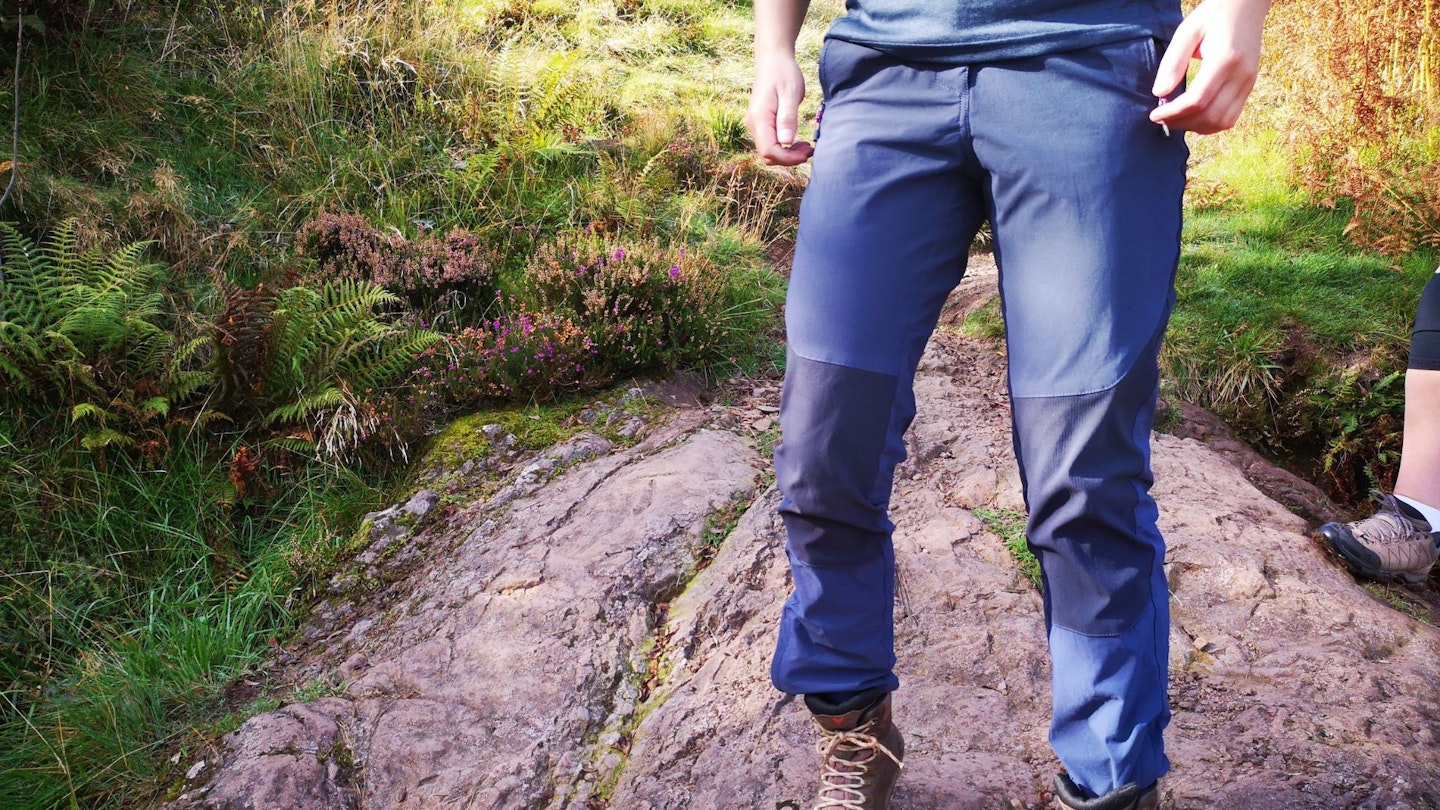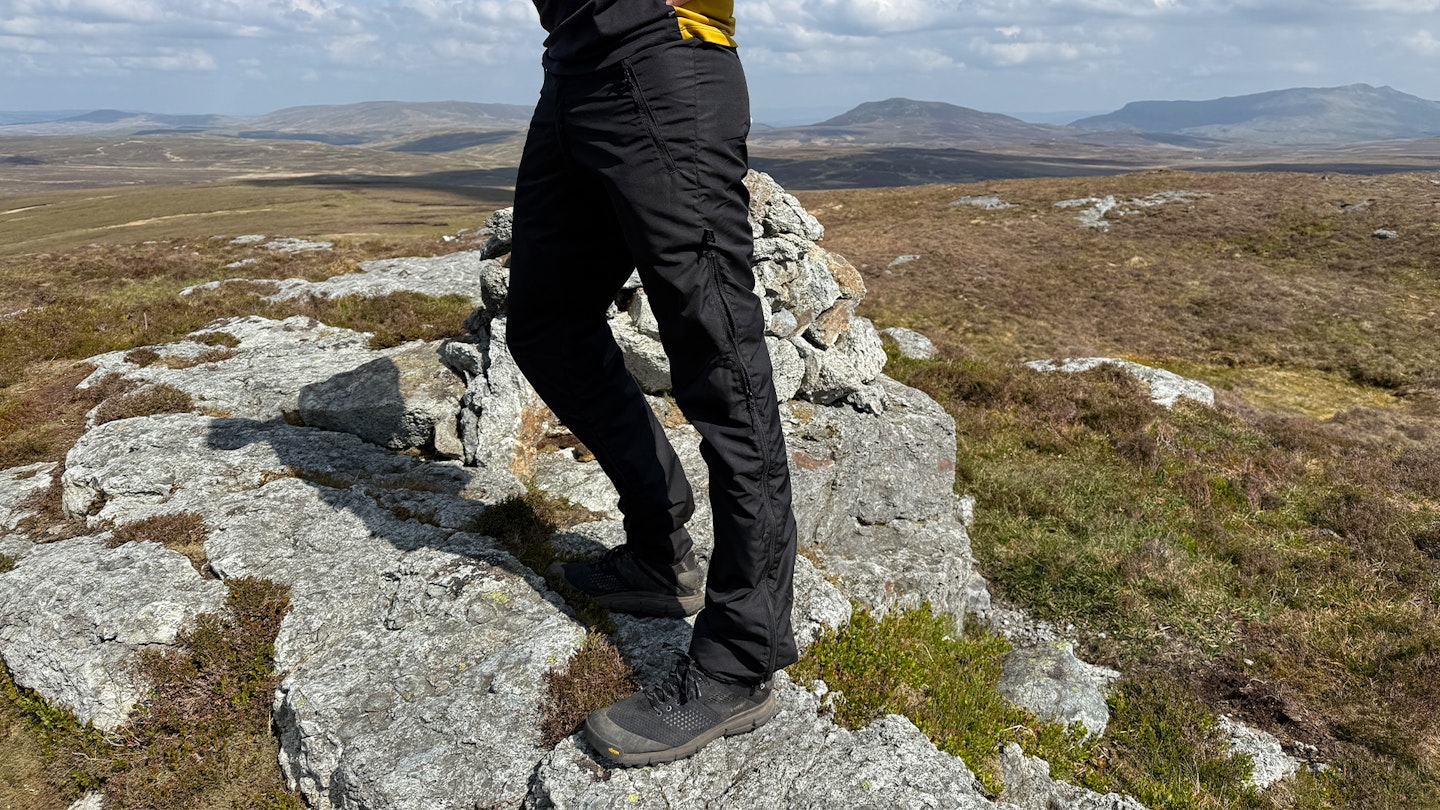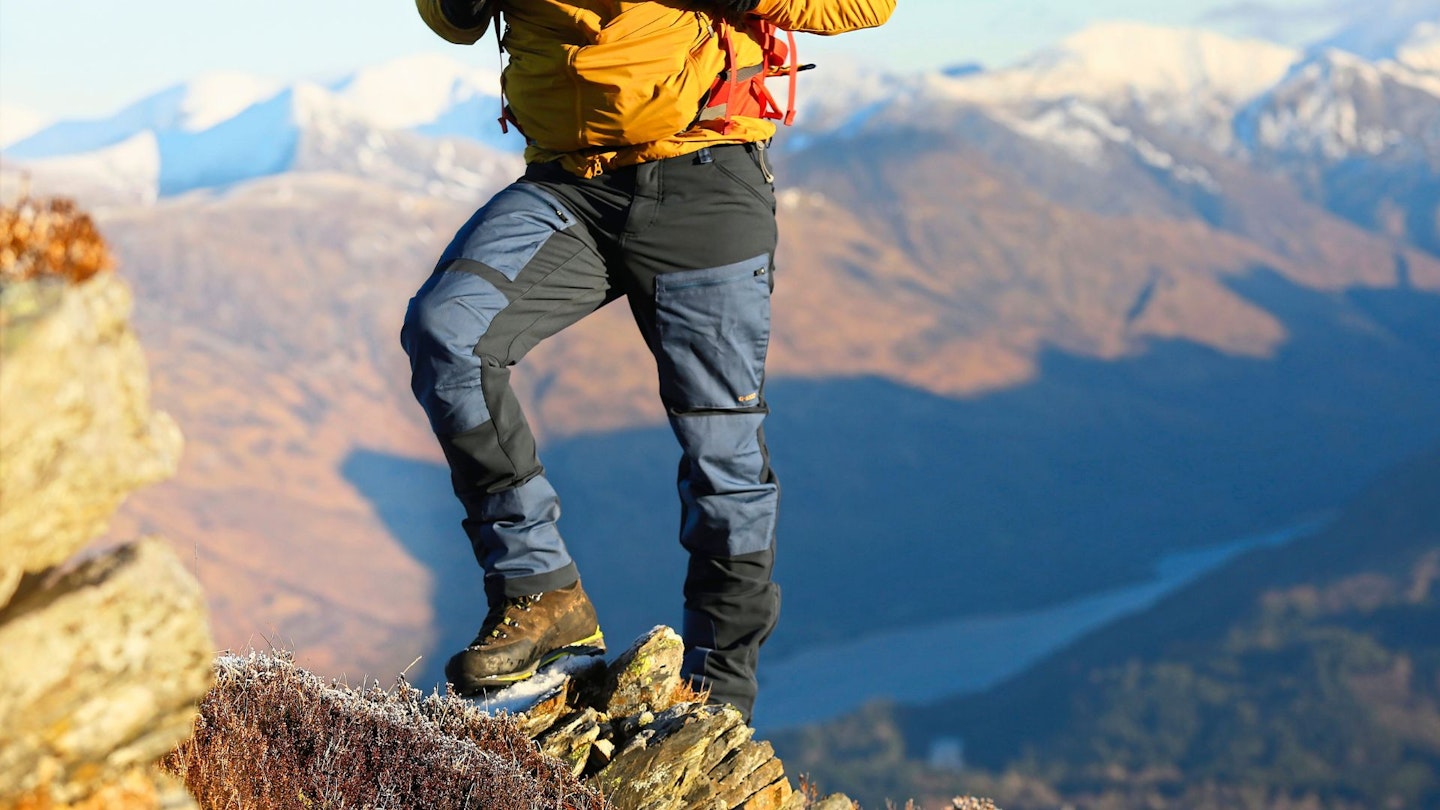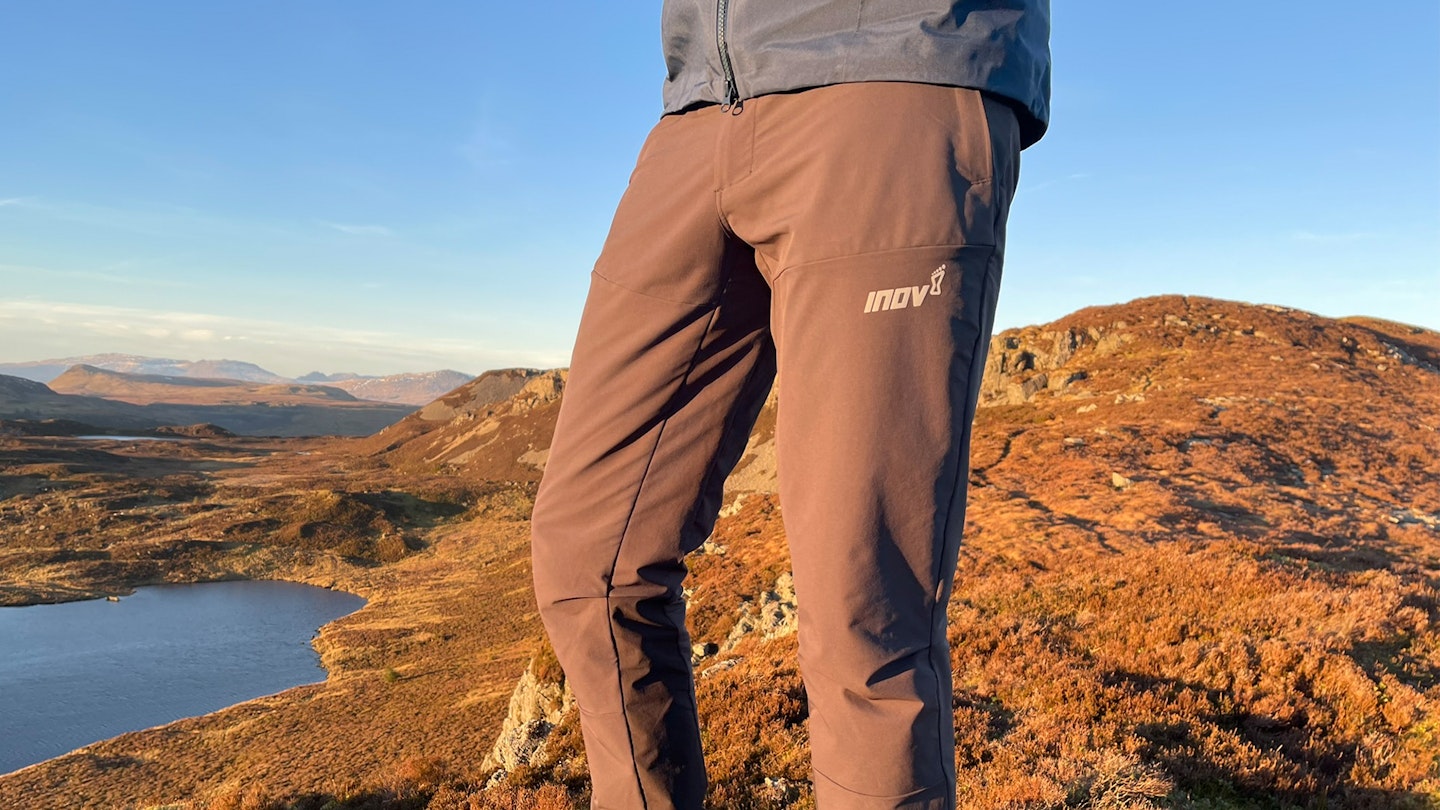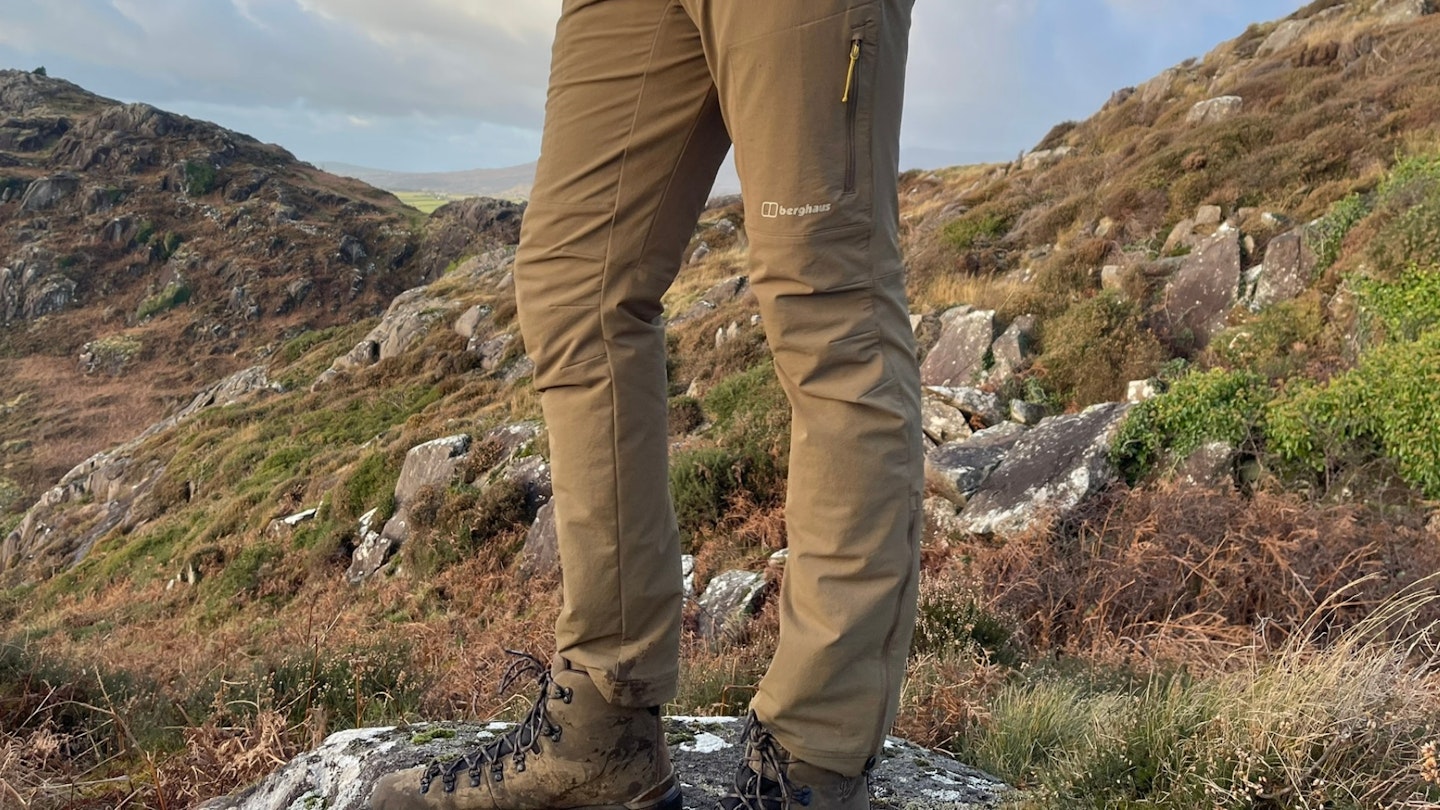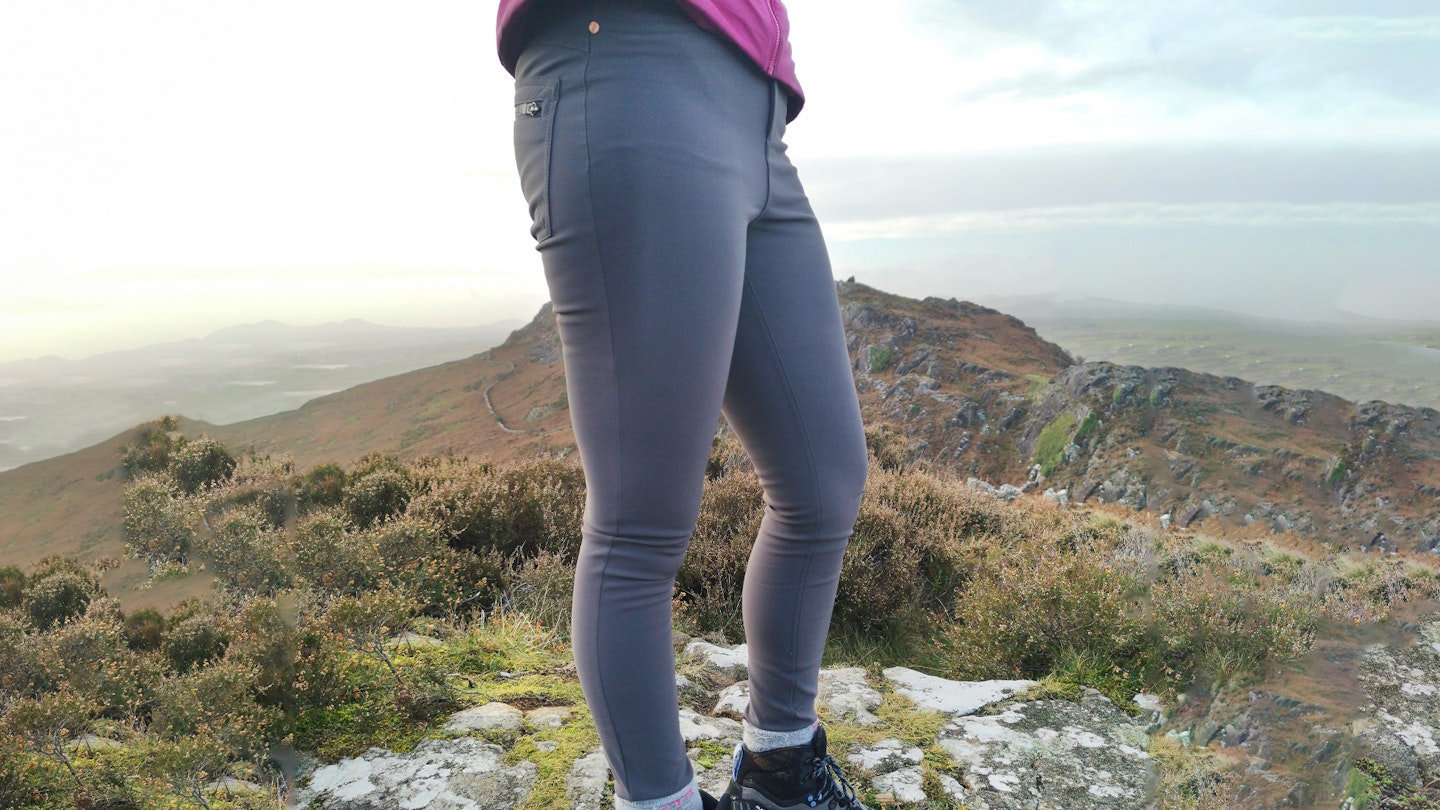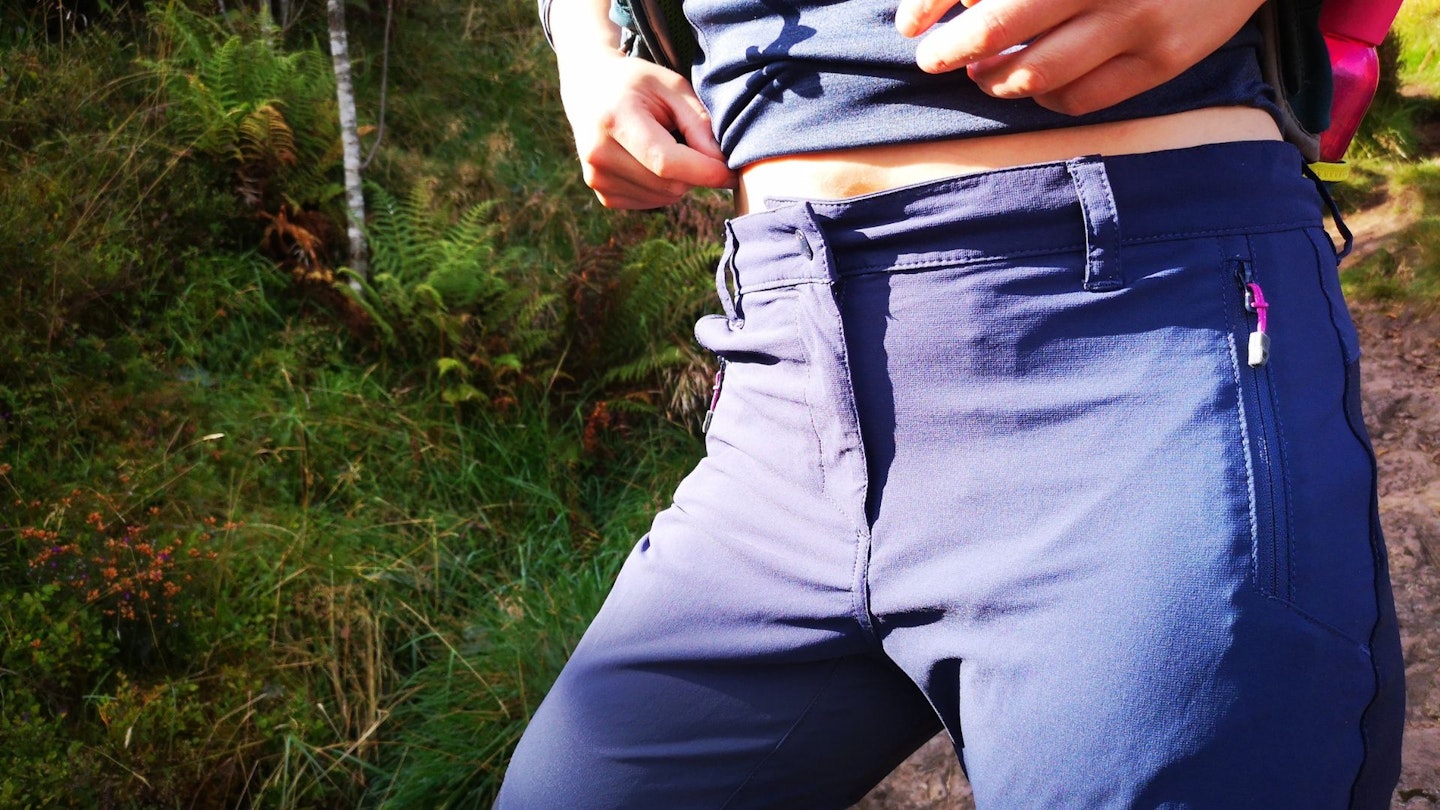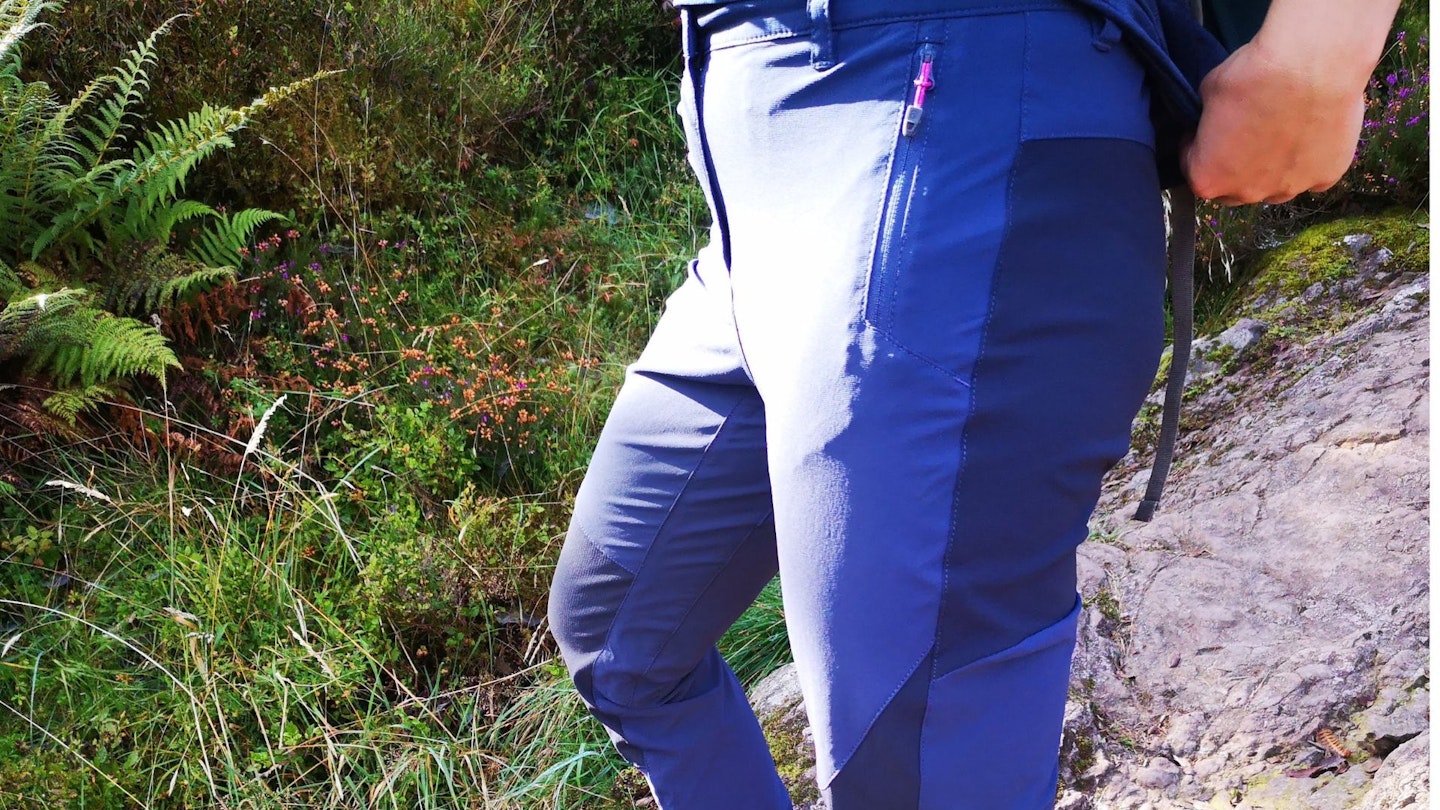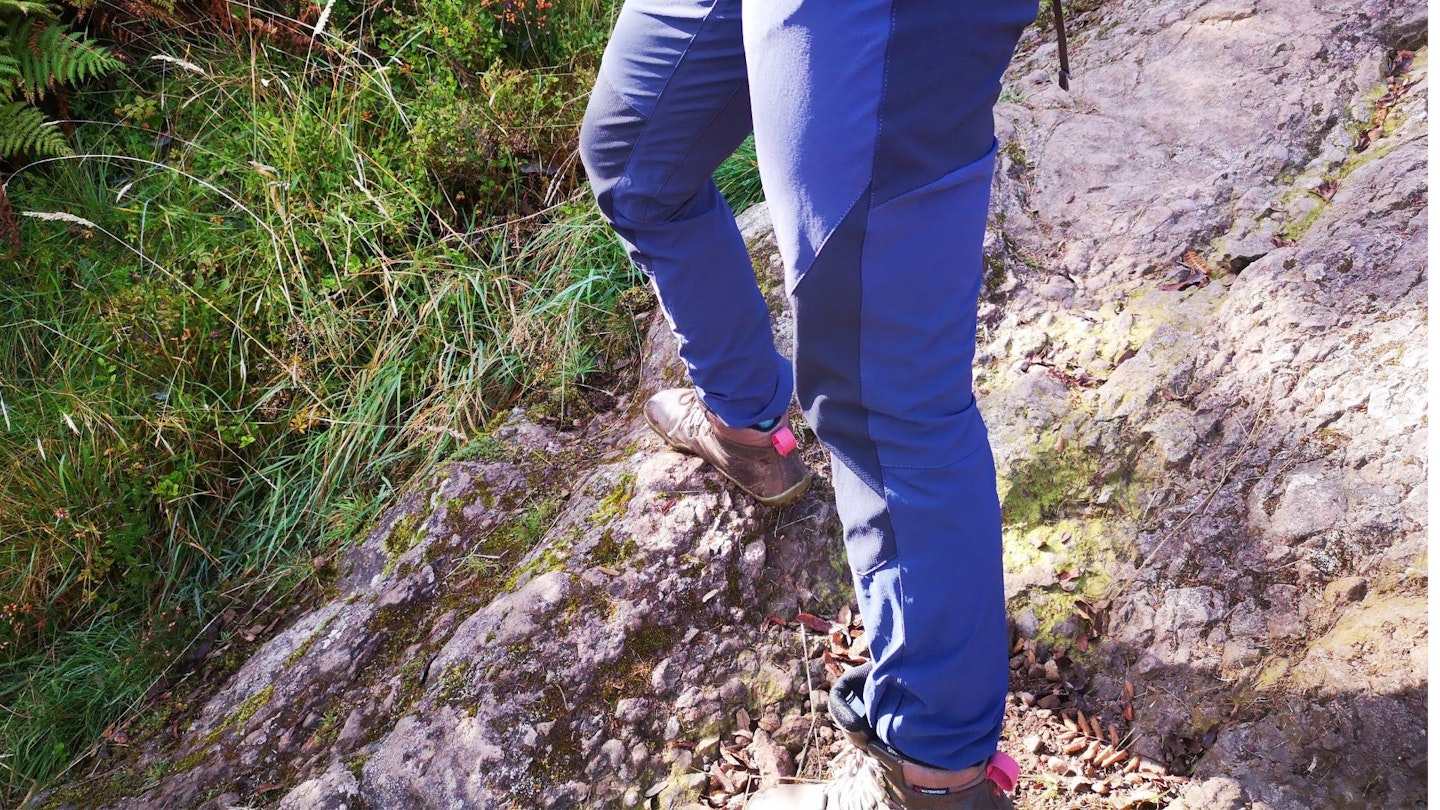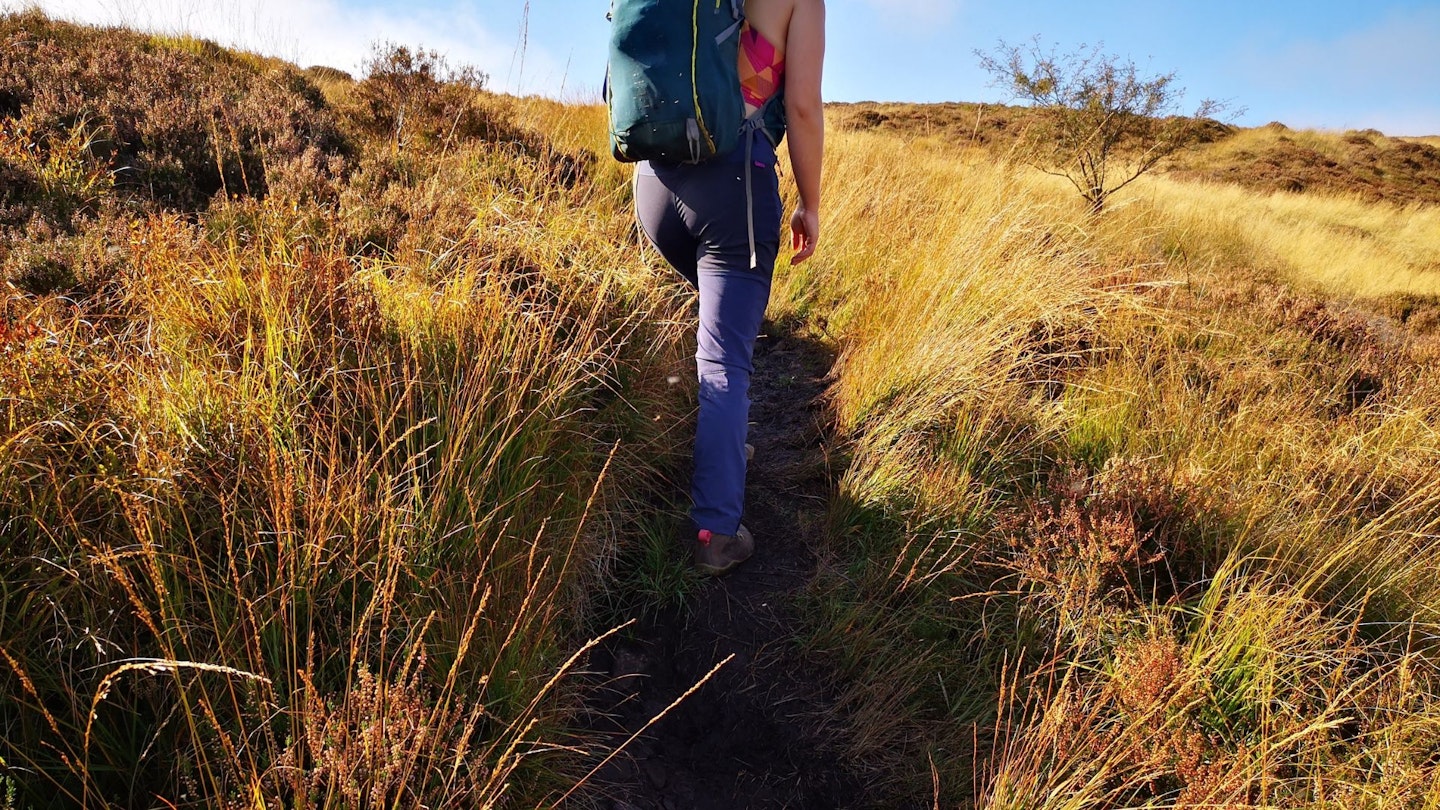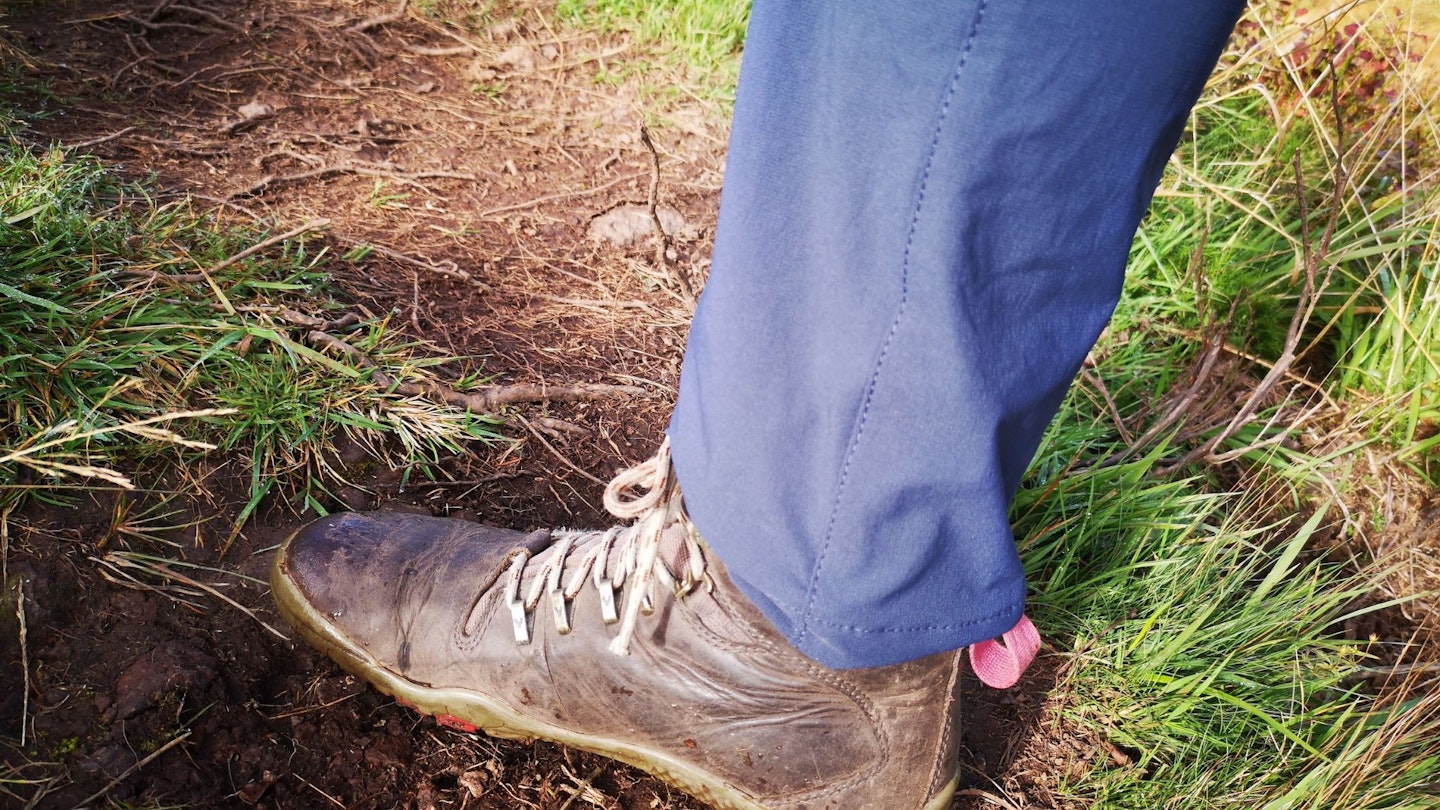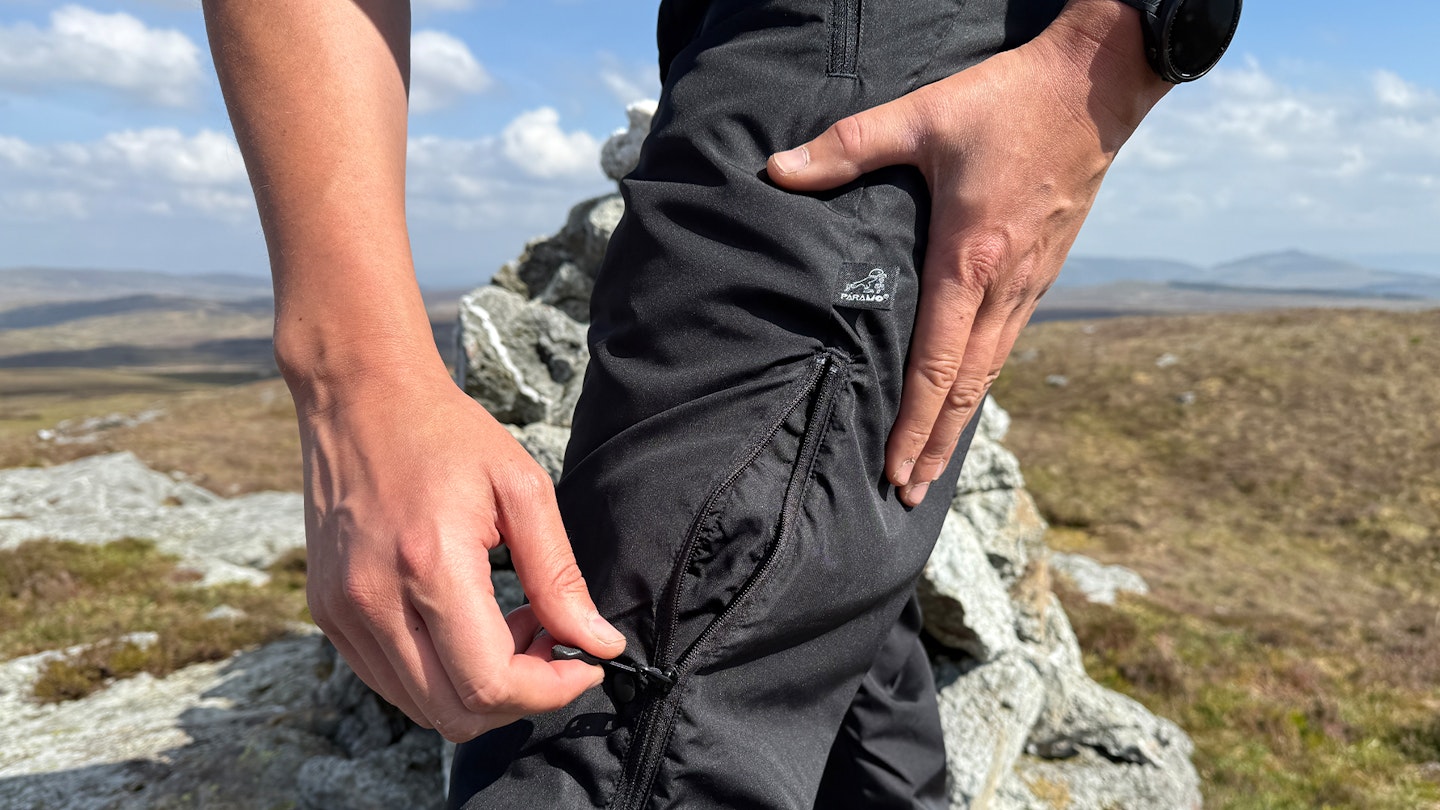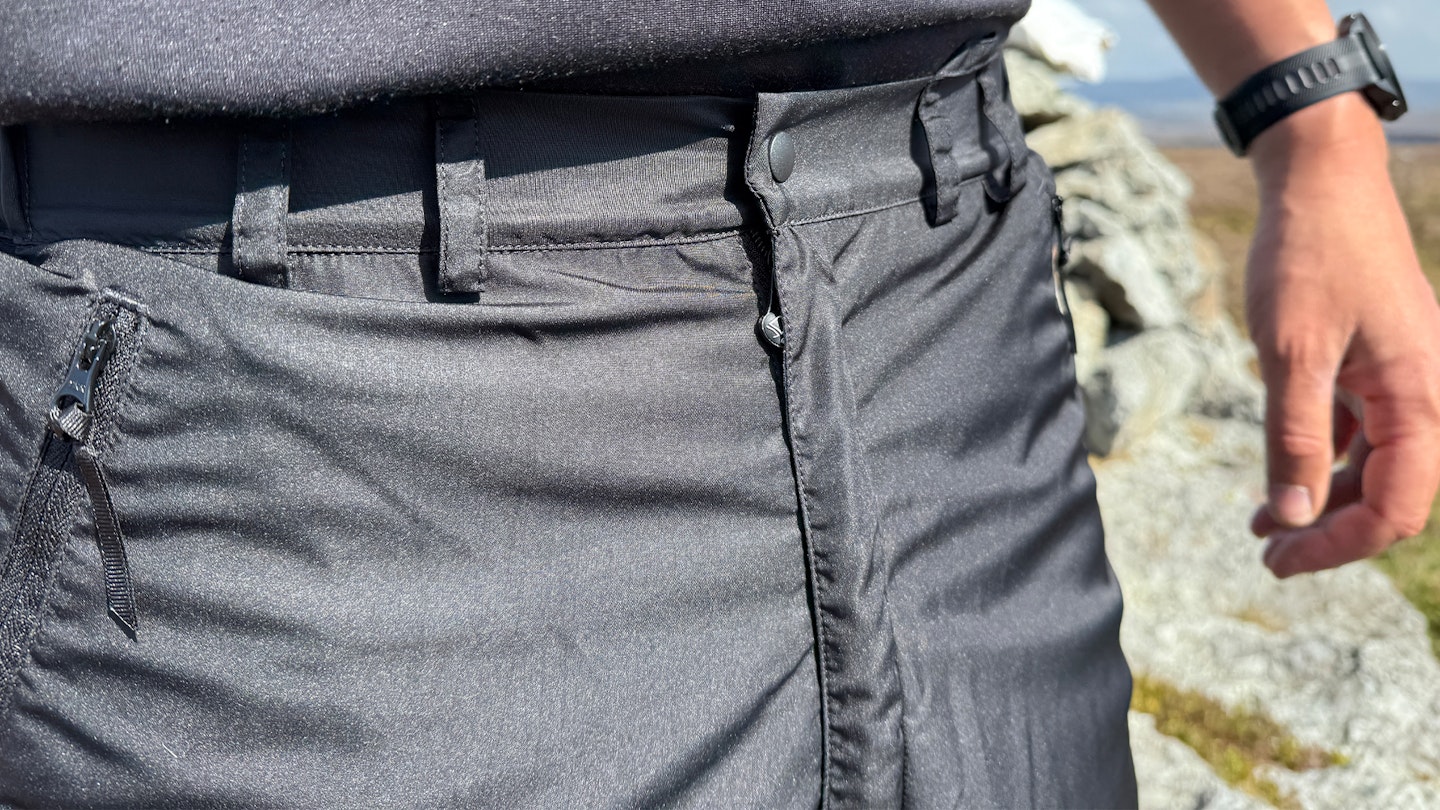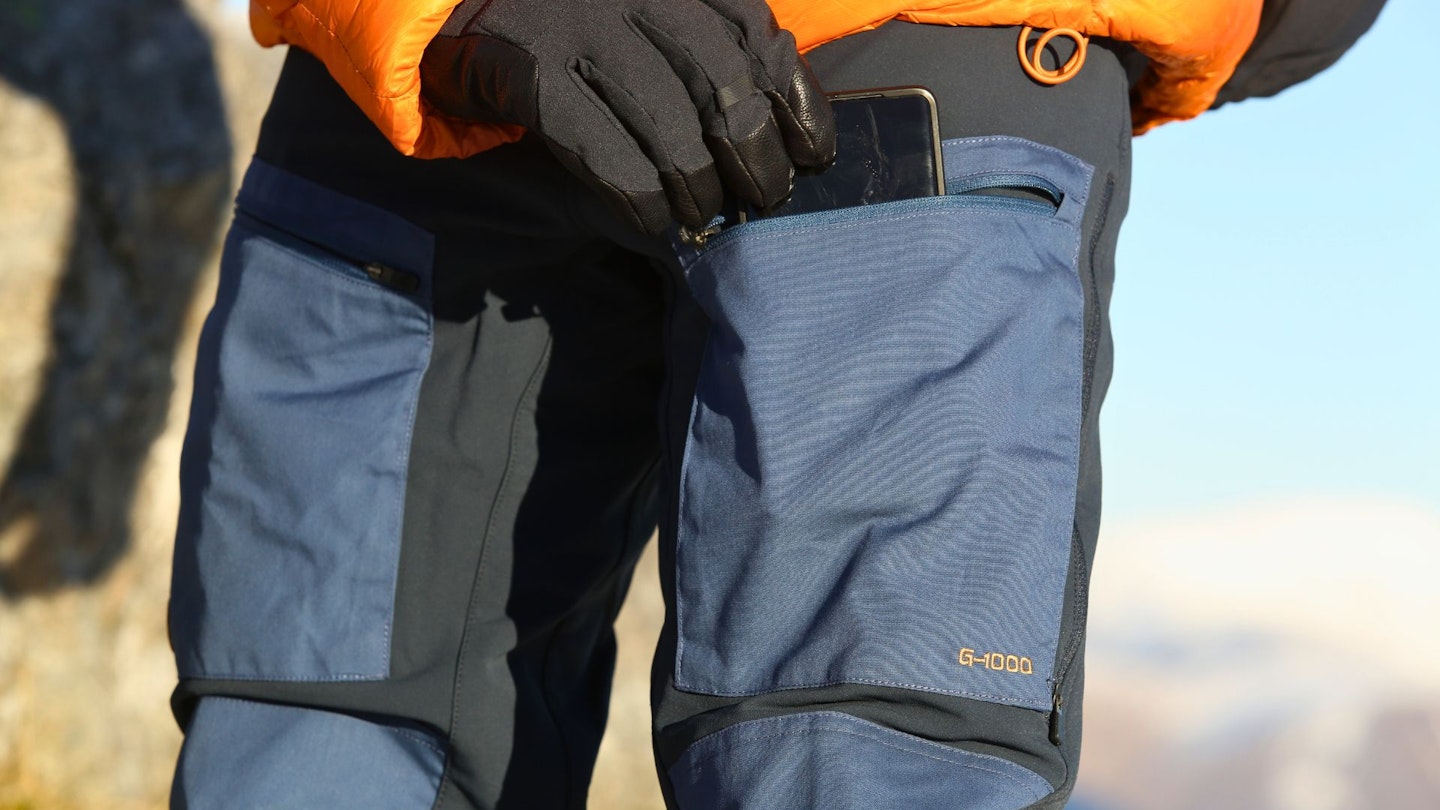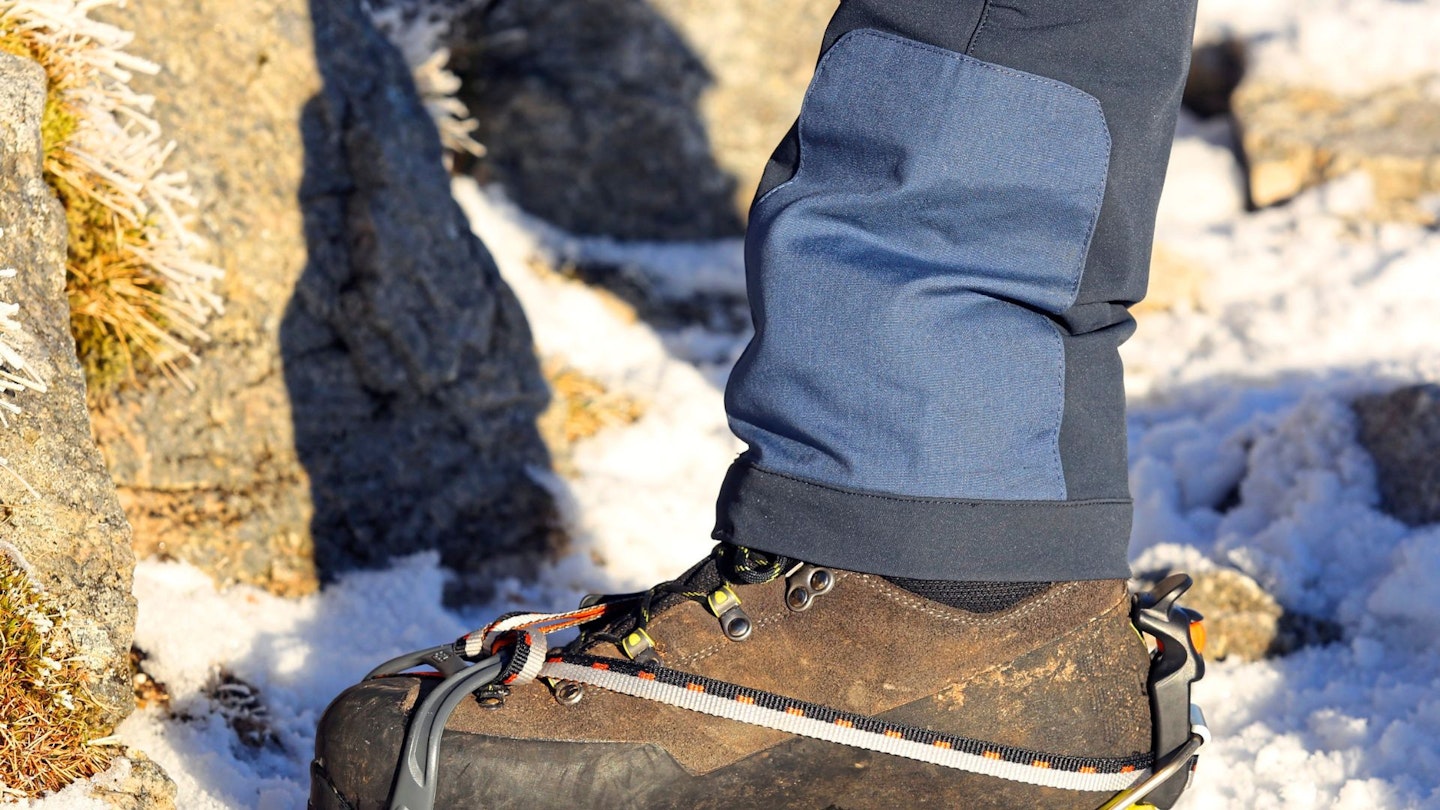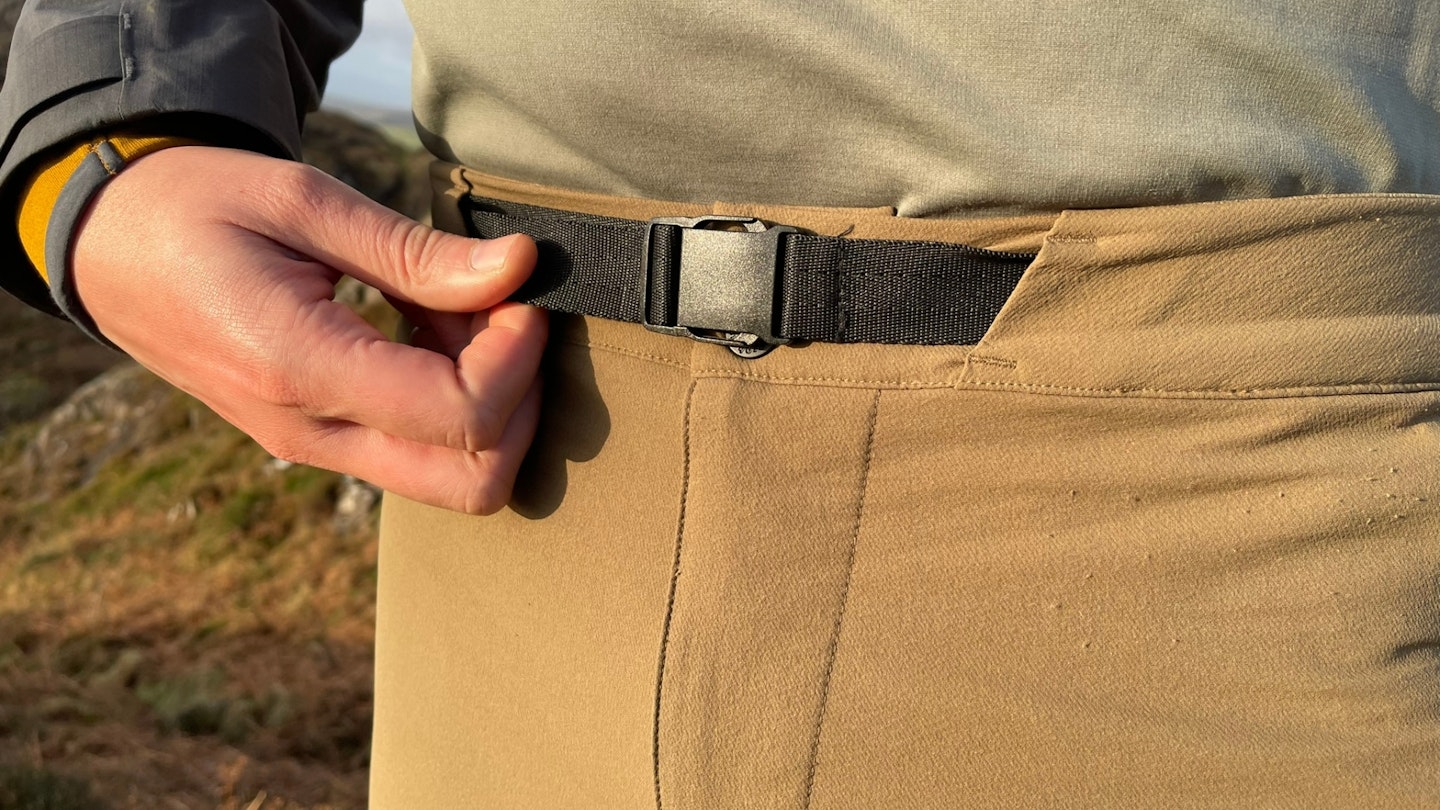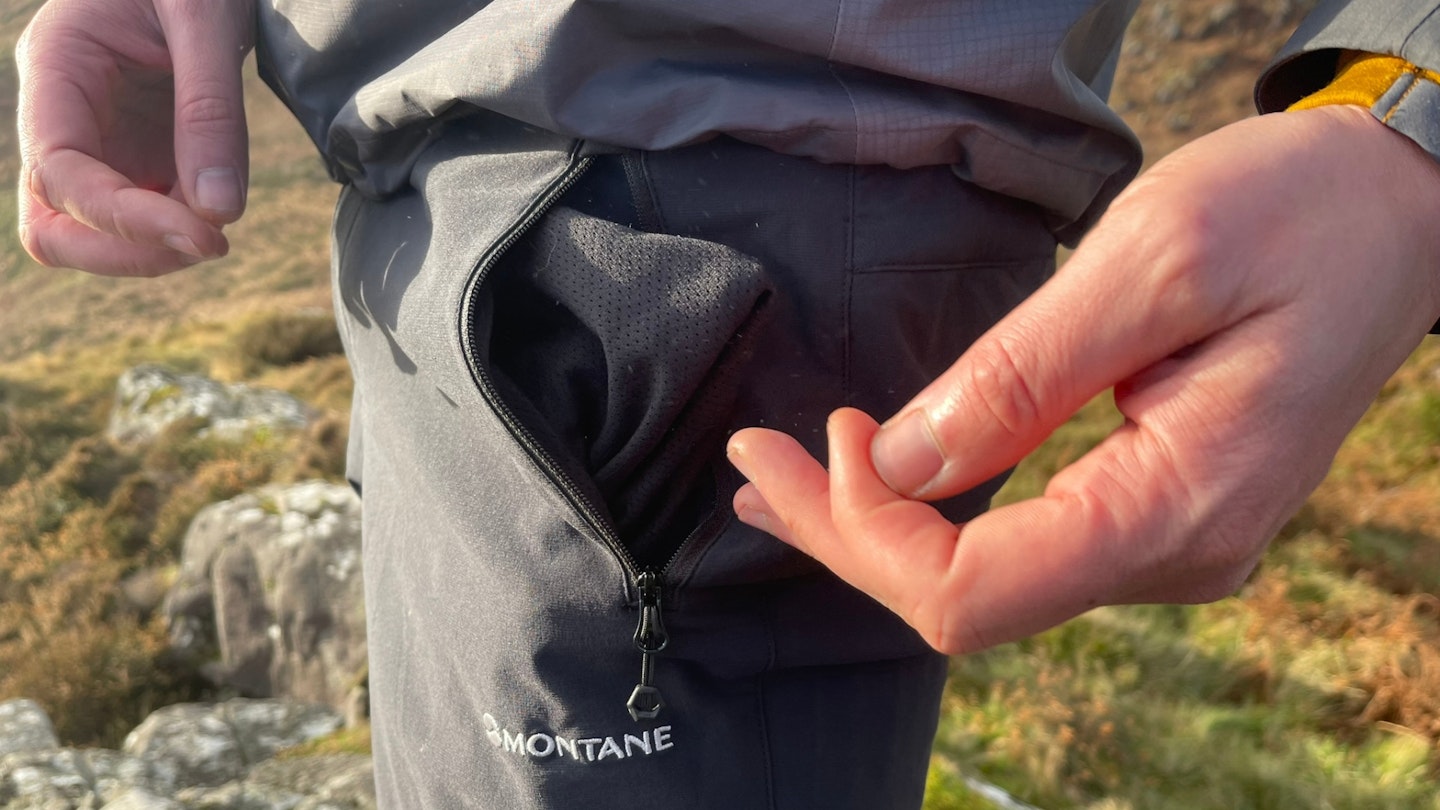In most places, you'll want a good pair of walking trousers for hikes throughout the year. If you live somewhere temperate, there's always a chance of chill or rain, and trousers offer extra protection from the elements.
The best hiking trousers are breathable for all-day comfort. They don't have to be waterproof trousers but should ideally be wind- and water-resistant.
A tapered cut will stop them flapping in the breeze, while a bit of stretch adds flexibility for hopping from rock to rock or scrambling up steep gullies. Those designed for use in winter need to up the toughness and protection.
In this guide, we review and recommend our favourite tested range of walking trousers. This includes three-season, winter, and waterproof options.
How we tested the best walking trousers

The trousers recommended here were tested by a number of our team including James Forrest, Matt Jones, Ellie Clewlow, Fliss Freeborn and Chris Williams. Our experienced gear testers know exactly what to look for in hiking trousers. Not only do we consider fit and comfort, but also aspects like durability, sustainability, and even small details such as where the pockets are placed.
All hiking clothing, including walking trousers, are subject to many miles of use in the conditions they're primarily intended for. This could include leisurely hillwalking through to mountain hiking in mid-winter.
Editor's note: This article was fully updated in January 2025 with six new reviews added in following another period of testing.
Best walking trousers reviewed:
The latest iteration of Fjällräven's Keb Trousers incorporates user feedback to enhance fit and functionality, and it's paid off.
Maintaining their renowned hybrid construction, these trousers combine durable, weather-resistant G-1000 Eco fabric—a sustainable polycotton blend that can be waxed for added water resistance—with stretch softshell panels, ensuring both robustness and exceptional freedom of movement.
We found the updated design features a slightly slimmer fit, particularly in the lower legs and rear, with expanded stretch panels and the removal of a rear thigh seam for improved comfort.
Double leg vents are still there, but now with a two-way zip for better usability. Simplified pocket construction and ankle patterning reduce weight and allow for easier repair or alteration of ankle cuffs.
However, getting rid of the double fabric layer at the instep, which previously provided scuff protection, is a minor drawback. But overall, these design refinements make the trousers even more suited to technical trekking and hillwalking, solidifying their status as a superb (and fashionable) choice for outdoor enthusiasts.
Read our full Fjallraven Keb Trousers review for more detail and check out the women's version here.
Pros
- Superb comfort
- Robust
- Excellent leg vents
Cons
- Not the lightest
- Expensive
| RRP: | £215 / $240 |
| Weight: | 630g / 1lb 6oz |
| Materials: | G-1000 Eco (65% recycled polyester, 35% organic cotton) / Stretch fabric (63% polyamide, 26% polyester, 11% elastane) |
| No. of pockets: | 4 |
| Men’s sizes: | UK 28-44” waist |
| Women’s sizes: | UK 6-22 plus additional ‘curved fit’ option |
| Leg lengths: | Men's short/reg/long | Women's short/reg/long |
If you’ve not heard of Keela, you’re in for a treat. This Highlands-based brand delivers practical, performance-focused outdoor gear at very reasonable prices – and their Nevis Trousers are a perfect example.
We tested them on a blustery hike in the Trossachs and found them brilliant in changeable weather. The Stretch-Tec fabric blocks wind without turning into a sauna when you’re working hard, and it’s tough enough to withstand scrapes and rough use.
Fit-wise, they strike a good balance between movement and comfort. The waist is nicely fitted, though the fabric’s skin-feel isn’t quite as soft as some others on test. Still, the four-way stretch offers loads of freedom, and the slightly relaxed leg cut means there’s room for layering.
We appreciated the practical features too – multiple zippered pockets for snacks, maps or even a Syrian hamster, and reinforced knee panels for scrambling or sitting on rough ground. The water-resistant finish copes well with light rain.
At £74.99 / $84, these are some of the best-value hiking trousers we’ve worn. They might not be featherlight or ultra-refined, but they punch well above their weight in performance, making them ideal for hillwalkers and weekend wanderers alike.
Read our full Keela Nevis trousers review for more
Pros
- Incredible all-rounder
- Great value
- Durable
Cons
- Material not as soft as some other trousers
| RRP: | £74.95 / $84 |
| Weight: | 312g / 11oz |
| Fit: | Regular |
| Materials: | Keela Stretch-Tec fabric including Lycra |
| Leg lengths: | Regular, short, long |
| Sizes: | 8-20 |
Patagonia’s Point Peak Trail Pants blend technical performance with the brand’s signature sustainability.
Made from recycled nylon and spandex, the fabric is tough enough for scrambling and rugged trails, yet kinder to the planet. It’s also Fair Trade Certified sewn, so you know the people who made them were treated ethically.
I tested them on the wet and windy west coast of Scotland, where they handled rain, mud and rock with ease. The double-weave fabric resists abrasion in high-wear areas like the knees and seat, while a PFC-free DWR finish sheds light rain.
Despite that durability, they’re breathable and flexible enough for warm days and big efforts, thanks to four-way stretch.
The fit is spot on, with a sturdy waistband and quality brass button. Practical features include zippered pockets and a metal lace hook to secure the cuff to your boots.
At £140 ($139), they’re not cheap—but they’re built to last and designed to be repaired through Patagonia’s Worn Wear program, extending their life even further.
Read our full Paragonia Point Peak Trail Pants review here
Pros
- Lightweight
- Durable
- Well-made
- Sustainable
Cons
- Larger initial investment than other brands
- No choice for alternative colourways
| RRP: | £140 / $139 |
| Weight: | 408g / 14.4oz |
| Fit: | Regular |
| Materials: | Recycled nylon/elastane fabric for durability and stretch; with a durable water repellent (DWR) finish |
| Leg lengths: | 29”, 31” |
| Sizes: | 6-20 |
The Páramo Cascada II trousers offer a unique all-in-one waterproof solution for hikers, eliminating the need for overtrousers thanks to their Nikwax Analogy directional system.
This innovative two-layer construction keeps you dry while remaining more breathable and comfortable than membrane-based waterproofs. Though slightly warm, long side zips provide excellent ventilation.
The fit is regular with good articulation, and features include a part-elasticated waist, twin hand pockets, and a double layer lining in the knees and seat for added protection when sitting or kneeling on wet ground.
However, the fabric lacks stretch and long-term durability due to its lightweight polyester build, making them less suitable for rugged terrain or scrambling. The soft fabric can also feel clingy or swishy.
Still, for general hillwalking in changeable UK weather, they’re an impressively breathable and comfortable option. If you’re seeking all-day waterproof trousers that feel more like regular walking pants, these are a compelling and well-designed choice.
Read our full Paramo Cascada II review
Pros
- Fully waterproof without a membrane
- Excellent breathability and comfort
- No need for overtrousers
- Long, ventilated side zips
- Soft, quiet fabric Double-layer lining in key areas (knees, thigh, seat)
Cons
- No built-in stretch
- Slightly clingy, swishy fabric feel
- Not as tough as some rivals
- Not ideal for scrambling or mountaineering
| RRP: | £200 / $240 |
| Weight: | 480g / 1lbs 0.9oz (Men's L) |
| Men's sizes: | XS-3XL |
| Women's sizes: | XS-XXL |
| Leg lengths: | Short/Reg/Long |
| Fabric: | Nikwax Analogy waterproof fabric, 100% polyester |
The Mountain Equipment Ibex Pants are highly regarded amongst our team, plus other hillwalkers and mountaineers, for their durability, practicality, and comfort.
Made from Exolite 210, a 210gsm double-weave softshell fabric composed of 92% polyamide and 8% elastane, these trousers offer four-way stretch to balance toughness and mobility.
The material provides decent wind resistance, breathability, and is reasonably quick-drying properties, making them suitable for various weather conditions. The 2025 version features a fluorocarbon-free durable water repellent treatment.
The 'alpine fit' design ensures a trim yet non-restrictive cut, with tapered lower legs and zipped ankle gussets for compatibility with larger boots. With five pockets, including two hand pockets, two thigh pockets, and one rear pocket, they offer ample storage.
Available in men's sizes 28–40 inches and women's UK sizes 8–16, with short, regular, and long leg lengths, they cater to a wide range of users. Priced at £90 ($150), we consider the Ibex Pants to be good value, though they may be a bit warm for summer use and lack reinforced or double-stitched seams.
**
Read our full Mountain Equipment Ibex Pant review for more info, while you can find the women's version, the Chamois Pant, here.**
Pros
- Comfortable
- Breathable and quick drying
- Good value
- Plenty of pockets
Cons
- No reinforcement or double-stitched seams
- A little warm for summer use
| RRP: | £90 / $149.95 |
| Materials: | Exolite 210gsm double-weave softshell (92% Polyamide, 8% Elastane) |
| No. of pockets: | 5 |
| Men’s sizes: | 28–40” waist |
| Women’s sizes: | UK 8-16 (Mountain Equipment Chamois) |
| Leg lengths: | Short, Reg and Long leg |
| Weight: | 450g / 15.8 oz |
This offering from Fjällräven is a lighter and even more flexible version of the Swedish brand's standard Keb trousers – a previous 'Best in Test' winner in our Trail magazine group test. It uses a zoned fabric construction, largely consisting of fast-drying, double-woven nylon stretch fabric.
Thigh pockets, knee panels, hems and ankle scuff patches feature G-1000 Lite Eco reinforcements for extra durability. This is a tough ripstop fabric incorporating organic cotton and recycled polyester, which can be waxed for extra water resistance.
Pre-shaped knees and a crotch gusset allow superb freedom of movement, while the tapered legs ensure minimal flapping in windy weather.
The lower legs have press-stud ankle cinches, and you also get zipped thigh vents to help dump heat when working hard uphill.
Twin zipped thigh pockets provide secure storage (the right-hand pocket has a stretch mesh inner to hold a smartphone). There are also two open hand pockets and a waistband fitted with belt loops, finished with a button closure and a zip fly.
These well-built and versatile trousers feel protective and robust without being too hot or heavy. They work well for hillwalking and scrambling in most conditions, from spring right through to autumn.
There's no women's version yet. We think the hem cinches could use some additional snaps for an even closer fit with trail shoes or mid-boots. They're expensive trousers too.
**Find the women's version here
**
Read our full Keb Agile Trousers review for more
Pros
- Uses more sustainable fabrics
- Allows excellent freedom of movement
- Great collection of features
- Tough
Cons
- No women's version
- Overpriced
| RRP: | £195 / $195 |
| Weight | 412g / 14.5 oz |
| Fit | Regular with tapered lower legs |
| Materials | G-1000 Lite Stretch (partly recycled, PFC-free) |
| Leg lengths | 30, 32, 34 |
| Sizes | 27-42 |
The Inov8 Venturelite Pants mark the brand’s first step into dedicated hiking clothing – and it’s a strong debut. These softshell trousers are lightweight and breathable, with a trim, tapered cut ideal for fast-paced hiking, scrambling or backpacking.
Made from a nylon-elastane blend with four-way stretch, they offer excellent freedom of movement, aided by articulated knees and a gusseted crotch. A DWR finish repels light rain, while quick-drying fabrics add to their all-round performance.
Features include part-elasticated hems, instep scuff panels, a comfortable low-profile waistband, two zippered hand pockets with internal drop pouches, and a zippered thigh pocket.
While a tighter ankle cuff or adjustable hem would help with fit over different footwear, and only one leg length is offered, the overall design is smart and functional.
They’re too thin to handle full winter conditions but are ideal for spring to autumn use across a variety of outdoor adventures, especially where weight and mobility matter.
Read our full Inov8 Venturelite Pants review
Pros
- Lightweight and breathable
- Excellent stretch and articulation
- Quick drying
- Versatile for hiking, scrambling or fastpacking
- Good pocket layout
- PFC-free water repellent finish
Cons
- Limited sizing and only one leg length
- No ankle hem adjustment
| RRP: | £95/$125 |
| Weight: | 400g/14.1oz (men’s L) |
| Women’s version: | Yes |
| Men's sizes: | XXS-XXL |
| Women's sizes: | UK 6-14 |
| Leg lengths: | Reg only |
| Fabric: | Softshell 90% Polyamide, 10% Elastane, PFC-free DWR finish |
The Berghaus Trail Explorer Pants are midweight softshell walking trousers that occupy a niche between the brand's superlight Lomaxx and classic Navigator or Ortler trousers. They are slightly tougher and warmer than the Lomaxx and more technical than the Navigator or Ortler models.
Priced at £95, they are also marginally cheaper than the Fast Hike trousers and offer enhanced comfort due to their four-way stretch softshell fabric.
We found the Trail Explorer Pants feature a true-to-size, slim, and streamlined fit, with a tapered lower leg suitable for both trail shoes and larger boots. The fabric composition of 91% polyamide and 9% spandex provides excellent flexibility and freedom of movement too.
Available in a wide range of waist sizes (28–42 inches) and three leg lengths (short, regular, and long), they cater to various body types.
However, the trousers lack thigh vents and reinforced or double-stitched seams, and may be too warm for summer use.
Read our full Berghaus Trail Explorer Pants review for more information. You can also find the women's version available to purchase here.
Pros
- Great cut
- Comfortable
- Breathable and quick drying
- Good value
- Broad range of sizes and leg lengths
- Plenty of pockets
Cons
- No thigh vents
- No reinforcement or double-stitched seams
- A little warm for summer use
| RRP: | £95 / $117 |
| Weight: | 480g / 17oz |
| Materials: | Stretch softshell (91% Polyamide/9% Spandex) with 100% polyester pocket linings and trims |
| No. of pockets: | 5 |
| Men’s sizes: | 28–42" waist, with three leg length options of 30", 32" and 34" |
| Women’s sizes: | UK 8-20, with three leg length options of 29", 31" and 33" |
| Leg lengths: | Short, Reg and Long leg (men’s and women’s) |
The Montane Tenacity Pants are versatile, three-season softshell trousers designed to be a step up from the popular Terra range. Made from Granite Stretch fabric, they offer a comfortable fit with ample stretch, making them suitable for most hill conditions from spring to autumn.
The pants feature four pockets, providing practical storage options. However, we noticed the mesh linings of these pockets are prone to snagging, which is a drawback. Sizing tends to be generous too, so opting for a size down is advisable for those between sizes.
We were pleased to see the Tenacity Pants are available in a wide range of waist sizes (28–40 inches) and three leg lengths (short, regular, and long), ensuring a tailored fit for different body types.
At about 425 grams, they are midweight and durable. While the rise is slightly higher than some may prefer, the tapered lower leg design doesn't catch or scrape on rocks and foliage.
Overall, we rate the Montane Tenacity Pants for their comfort, versatility, and quick-drying properties, making them a reliable choice for outdoor enthusiasts.
Read our full Montane Tenacity Pants review for more.
Pros
- Comfortable
- Versatile
- Quick drying
- Plenty of stretch
Cons
- Mesh pocket linings snag easily
- Generous sizing
| RRP | £120 / $150 |
| Weight | 425g / 15oz |
| Materials | Granite Stretch softshell (88% Nylon, 12% Elastane) |
| No. of pockets | 4 |
| Men’s sizes | 28–40” waist |
| Women’s sizes | UK 8-18 (Terra Stretch) |
| Leg lengths | Short, Reg and Long leg |
The Rab Torque Mountain Pants are designed as versatile all-rounders for hiking, hillwalking, and scrambling. They utilize Rab's Matrix double-weave stretch fabric, composed of 88% polyamide and 12% elastane, offering exceptional flexibility and breathability.
Unlike the original Torque trousers, these pants lack reinforced knees and ankles. It saves weight but we think feels less durable in high-abrasion areas. The waistband features a conventional zip fly with a press stud closure and belt loops, also differing from the elasticated design of their predecessors.
While the waist sizing is accurate, the fit is described as fuller in the seat and thighs, which may not appeal to those preferring a slimmer cut. The tapered lower legs fit well over various footwear, and ankle zips with gussets provide additional room for bulkier boots or gaiters.
Overall, the Torque Mountain Pants are excellent lightweight and comfort walking trousers with superb flexibility, but certainly don't feel like the most durable.
**Head over to our full Rab Torque Mountain Pants review for a more detailed test.
**
**You can also find the women's version of these trousers here.
**
Pros
- Lightweight and breathable
- Comfortable
Cons
- Slightly baggy
- Not the toughest
| RRP: | £110 |
| Materials: | Matrix double-weave stretch 182gsm fabric with PFC-free water-repellent finish (88% polyamide, 12% elastane) |
| No. of pockets: | 4 |
| Men’s sizes: | 28–38” waist |
| Women’s sizes: | UK 8-16 |
| Leg lengths: | Short, Reg and Long leg |
| Weight: | 370g / 13oz |
The Sprayway Compass Pro Pants are lightweight, breathable walking trousers designed for warm-weather hillwalking and summer trekking. Crafted from TecWEAVE stretch fabric (96% polyamide, 4% elastane), they offer two-way lateral stretch, and we found them very comfortable with good mobility.
The material provides a high UPF rating of 50+, ensuring excellent sun protection. The fit is true to size, with a regular cut that is roomier in the seat and thigh, tapering at the lower leg to prevent flapping in windy conditions.
A semi-elasticated waistband with belt loops and Velcro ankle tabs allows for a secure and adjustable fit over boots or trail shoes. There are three pockets: two zipped hand pockets and one zipped rear pocket.
At 300g, these trousers are quite lightweight and do undercut most competitors on price at £75 ($93). However, they aren't be the warmest or most durable option for more demanding conditions. Available in men's sizes 30–40" waist and women's UK sizes 8–18, with short, regular, and long leg lengths.
Check out the women's version of these trousers here and read our full Sprayway Compass Pro Pants review for more info.
Pros
- Lightweight and breathable
- Accommodating fit
- High UPF rating (50+)
- Excellent value
Cons
- Not the warmest
- Not the toughest
| RRP | £75 / $93 |
| Weight | 300g / 10.58oz |
| Materials | TecWEAVE stretch 135gsm fabric with water-repellent finish (96% polyamide, 4% elastane) |
| No. of pockets | 3 |
| Men’s sizes | 30–40" waist |
| Women’s sizes | UK 8-18 (Sprayway Escape) |
| Leg lengths | Short, Reg and Long leg |
Our female gear reviewer Ellie is an avowed fan of Acai's summer-weight Max Stretch Skinny trousers. She's also tested its cold-weather, fleece-lined Thermal Skinny trousers. But the brand's Aventurite Stretch Skinny are probably the best all-round option from Acai yet.
They're also the most eco-friendly since they incorporate recycled nylon and are finished with a PFC-free DWR treatment.
Otherwise, the formula is familiar. These are technical, performance-focused trousers developed for women, by women, with the look of skinny jeans. That means riveted front pockets, twin back pockets (one of which is zipped), belt loops and a rear leather-look logo patch for on-trend casual styling.
But the fabric is a hardwearing and quick-drying nylon polyester with four-way stretch, delivering great comfort and flexibility, plus decent durability.
They have a high waist to prevent a draughty back, even if your base layer rides up. And they come in a wide range of sizes, including four leg lengths. However, there's only one small rear-zipped pocket. And despite the fabric's high level of stretch, the skinny fit might not suit everyone.
For more close-fitting options, take a look at our list of the best hiking leggings.
Pros
- Sustainable
- Excellent comfort
- Quite durable
- Many sizes and four leg lengths
Cons
- Skinny fit not for everyone
| RRP: | £99 / $118 |
| Fit | Skinny |
| Materials | 49% recycled nylon, 47% polyester, 9% Spandex (PFC-free) |
| Weight | 305g / 10.8 oz |
| Leg lengths | 26, 29, 33 |
| Sizes | 6-22 |
How do I choose walking trousers?
What material should hiking trousers be?
Most 3-season hillwalking trousers and hiking shorts are made from tightly woven nylon or polyester soft shell, often with elastane for stretch.
They may have a durable water-repellent (DWR) treatment for added water resistance. Other outdoor trousers are made from polycotton, which can often be waxed for additional weather protection.
High-wear areas like the knees, seat and instep often have thicker, reinforced fabric panels. Look for double- or even triple-stitched seams in high-stress areas for added durability.
How should hiking trousers fit? Tight or loose?
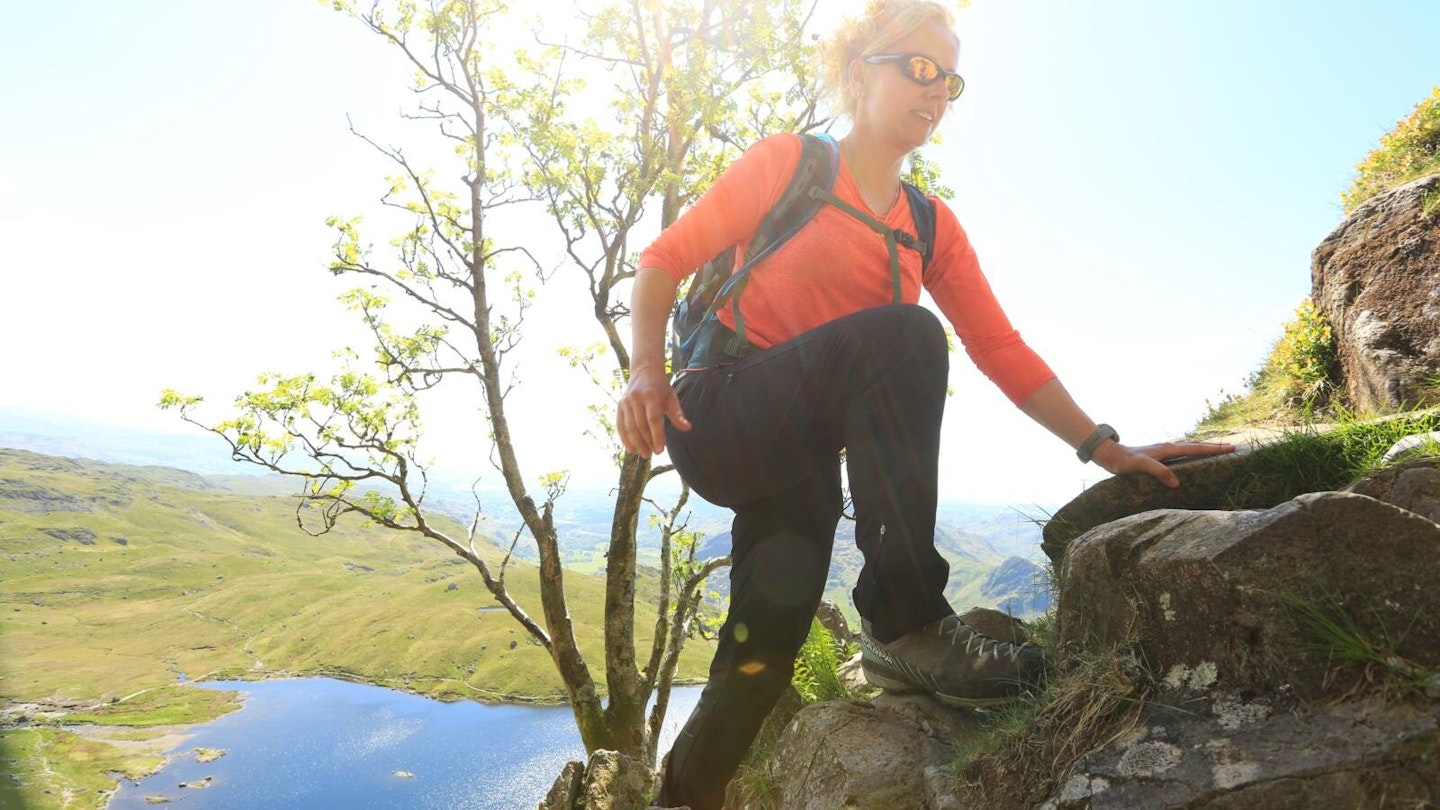
Whether tight or loose is a matter of preference, but everyone should have walking trousers that balance a secure fit with a lack of restriction.
An elasticated waist, either with belt loops or an integrated belt, gives all-round adjustability. A soft, lined waistband prevents irritation, especially when wearing a pack, so make sure it's the perfect size.
Generally, a slightly looser fit benefits comfort for long hiking days, but if you're looking for a close fit, ensure the material has plenty of stretch to maintain freedom of movement. Adding elastane (also called spandex or Lycra) to a fabric provides stretch, giving better freedom of movement and a more precise fit.
Two-way stretch fabrics stretch either vertically or horizontally. Four-way stretch fabrics stretch in both directions, crosswise and lengthwise.

Do walking trousers have extra ventilation?
Aside from insulated pairs for winter walking, good hiking trousers should have lots of ventilation features. Thigh vents can help to dump heat and can also be unzipped for better temperature regulation if you're forced to put on waterproof overtrousers.
They should also fit well around the ankle and accommodate your hiking boots. Adjustable cuffs with a press stud or Velcro tab give a closer fit and stop your trousers from flapping around. They also help you to see where you're putting your feet on technical terrain.
Features such as knee darts and a gusseted crotch improve overall fit and articulation, enhancing mobility, especially when scrambling or climbing.
Should you tuck your trousers into your walking boots?
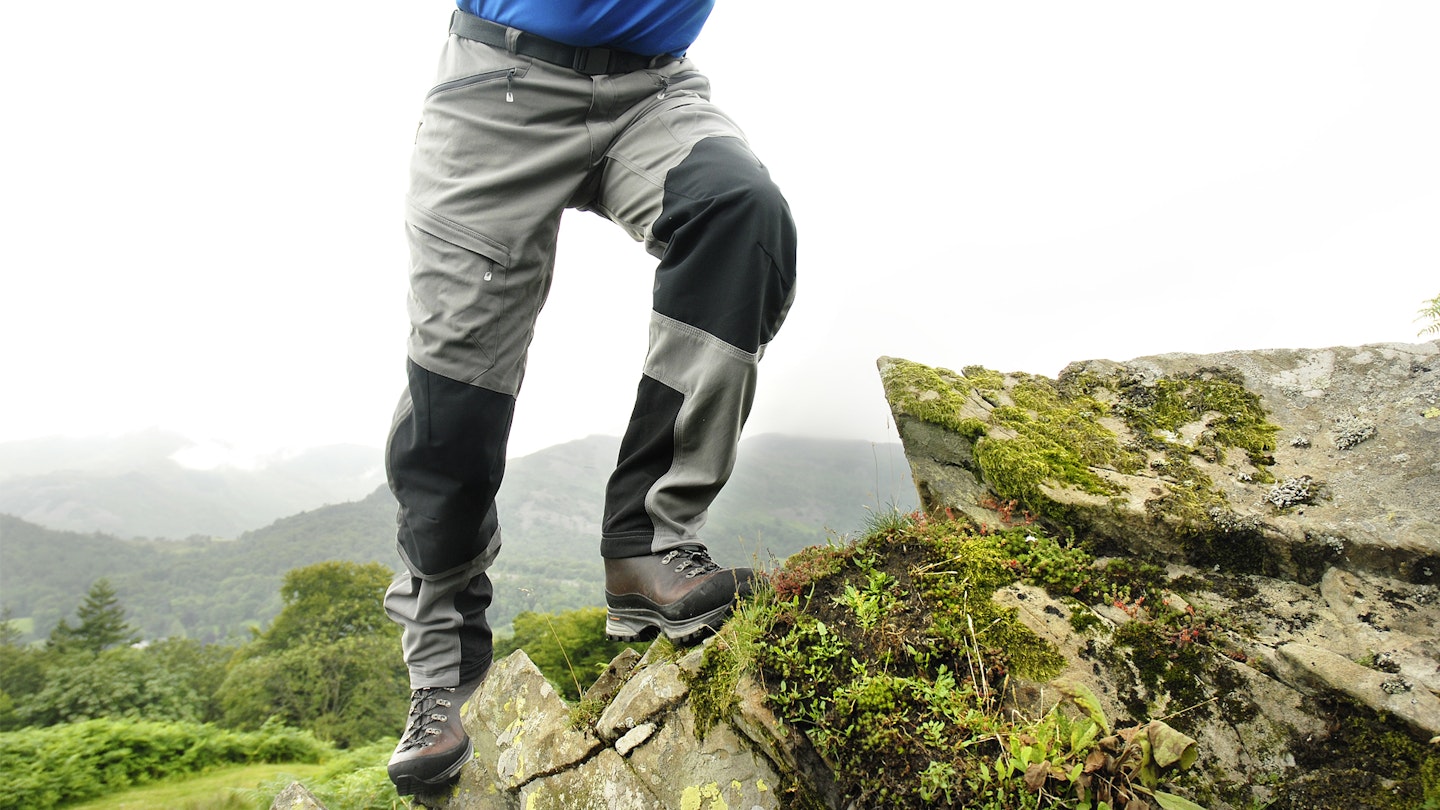
Any decent pair of hiking trousers should offer plenty of protection from fitting over the top of your walking boot and around the ankle. The only reason we've ever bothered to tuck our trousers in is when we didn't want them getting muddy on a week-long trek through the Yorkshire Moors.
Some trousers have an integrated lace or boot hook at the ankle cuff to help stop debris from getting into your boots, but again, this is a fairly rare problem to encounter.
Should I use different walking trousers for winter and summer?

There are benefits to having different walking trousers for different seasons. For example, in the summer you may want some that zip off into shorts, are made of a lighter weight material or have additional venting.
All of those things will help keep you cool in hot weather, while many walking trousers will also come with a UPF rating to demonstrate how much they'll protect your skin against the sun's harmful UV rays.
Of course, it's perfectly acceptable to wear these lighter walking trousers in winter, especially if you intend to do some layering.
For example, you could wear some base layer bottoms underneath them for additional warmth if needed, while a pair of waterproof trousers will offer protection against wind and rain.
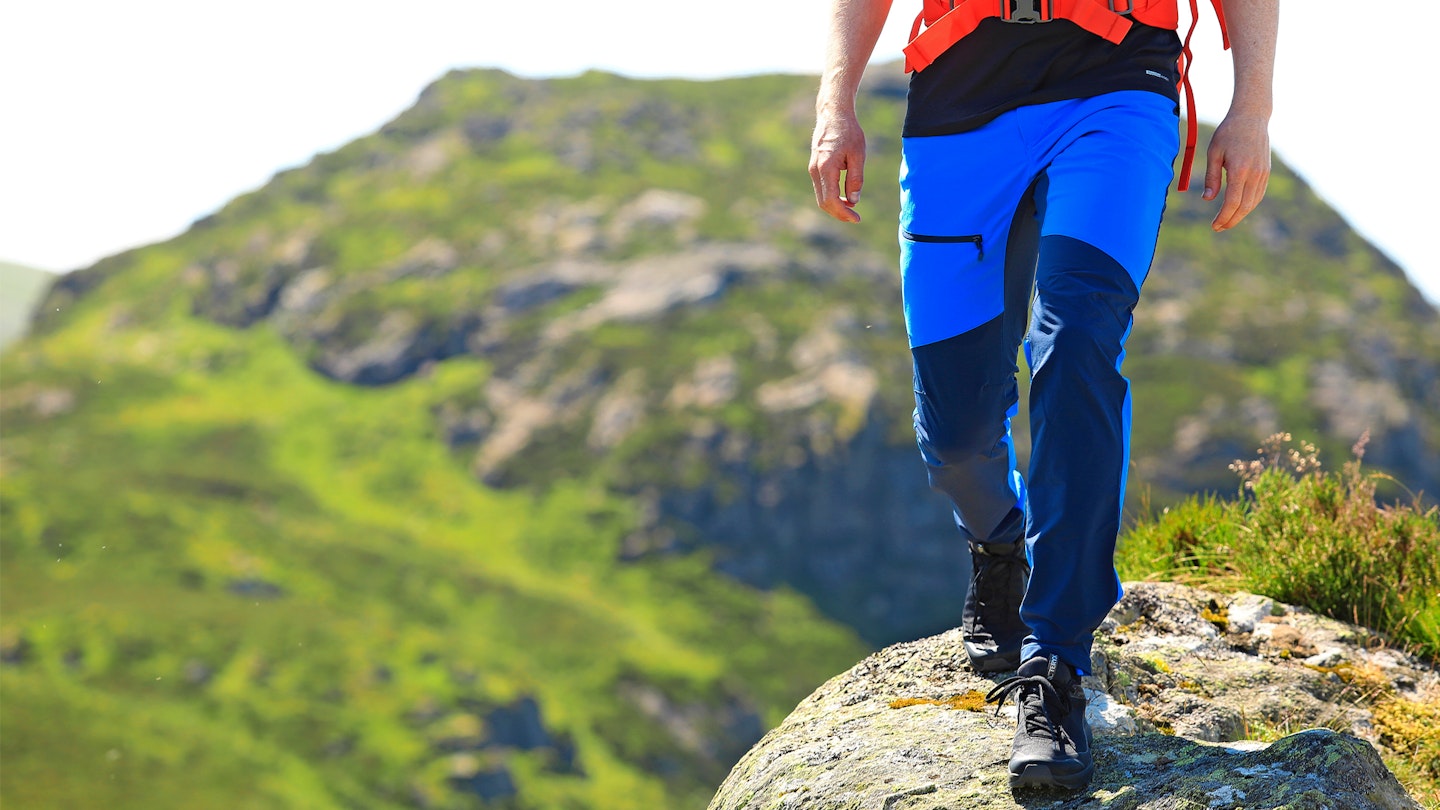
Alternatively, you may want to opt for some thicker walking trousers for winter. There are many options made of a softshell material, which can be warmer than summer-weight trousers and they often have a DWR coating.
Thicker options will also be more durable and harder wearing, primed to deal with the rugged terrain you often find when in the mountains in winter.
You can also get lined walking trousers, but we'd only recommend these for properly cold conditions, as it can be very easy to overheat in these when on the go.
Do hiking trousers have extra pockets?
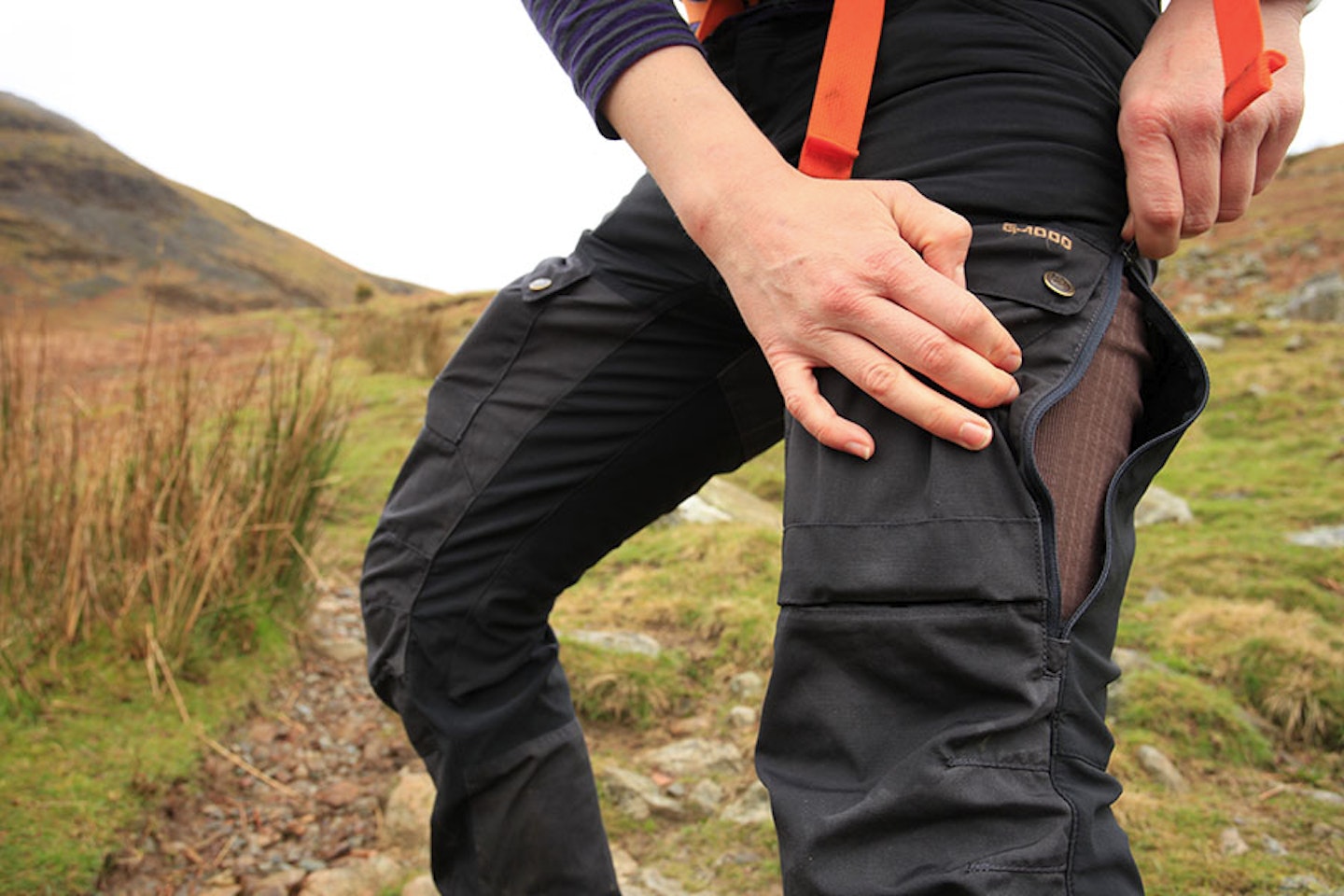
Many do. You'll want to seek out zipped pockets to keep your items safe. We'd say they're an essential for mountain walking or scrambling.
Large pockets that will accommodate a map are particularly practical, but make sure they are sensibly placed so as not to affect leg movement.
How do I clean my walking trousers?
In order to keep the material breathable and maintain its water repellency (if it has a DWR coating), use Grangers or Nikwax gear cleaner (below) instead of regular laundry detergnet, which leaves behind residue and inhibits the peformance of technical fabrics.
And if your walking trousers suffer a tear, broken zip, or some ailment, don't fret. Retailers like Cotswold Outdoor, along with outdoor brands and specialists like Alpkit and Lancashire Sports Repairs, have superb repair services on hand for all types of outdoor gear.
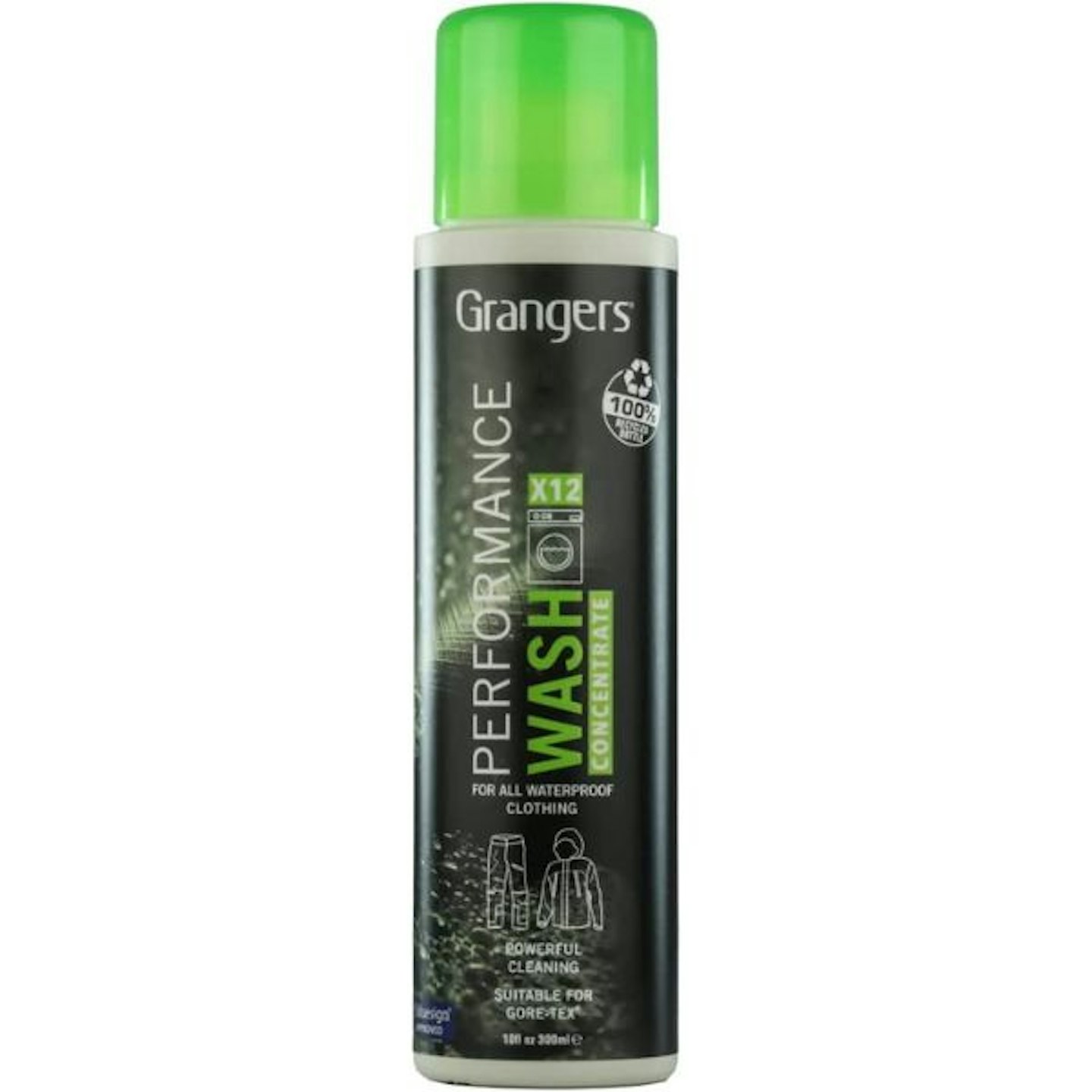
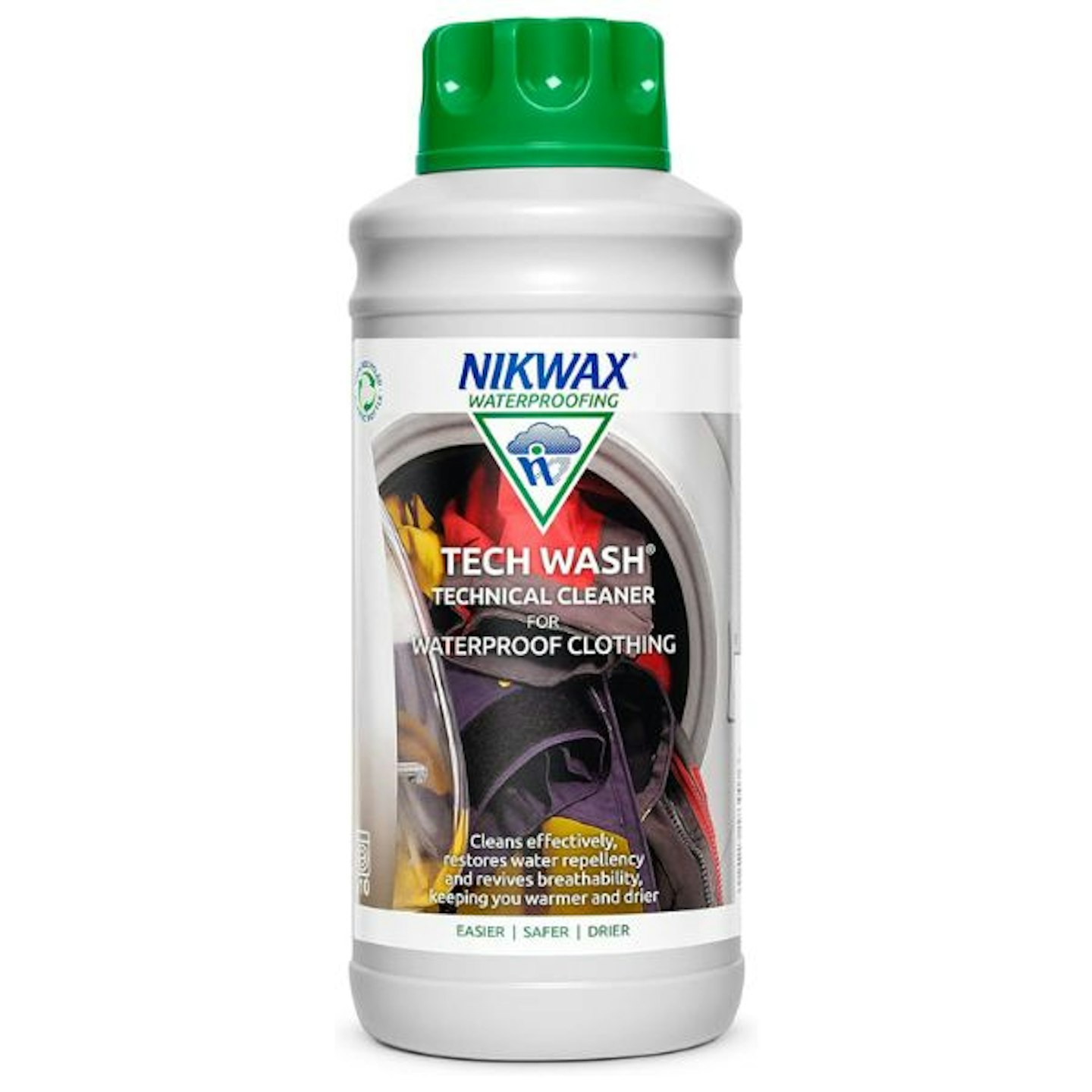
About the author
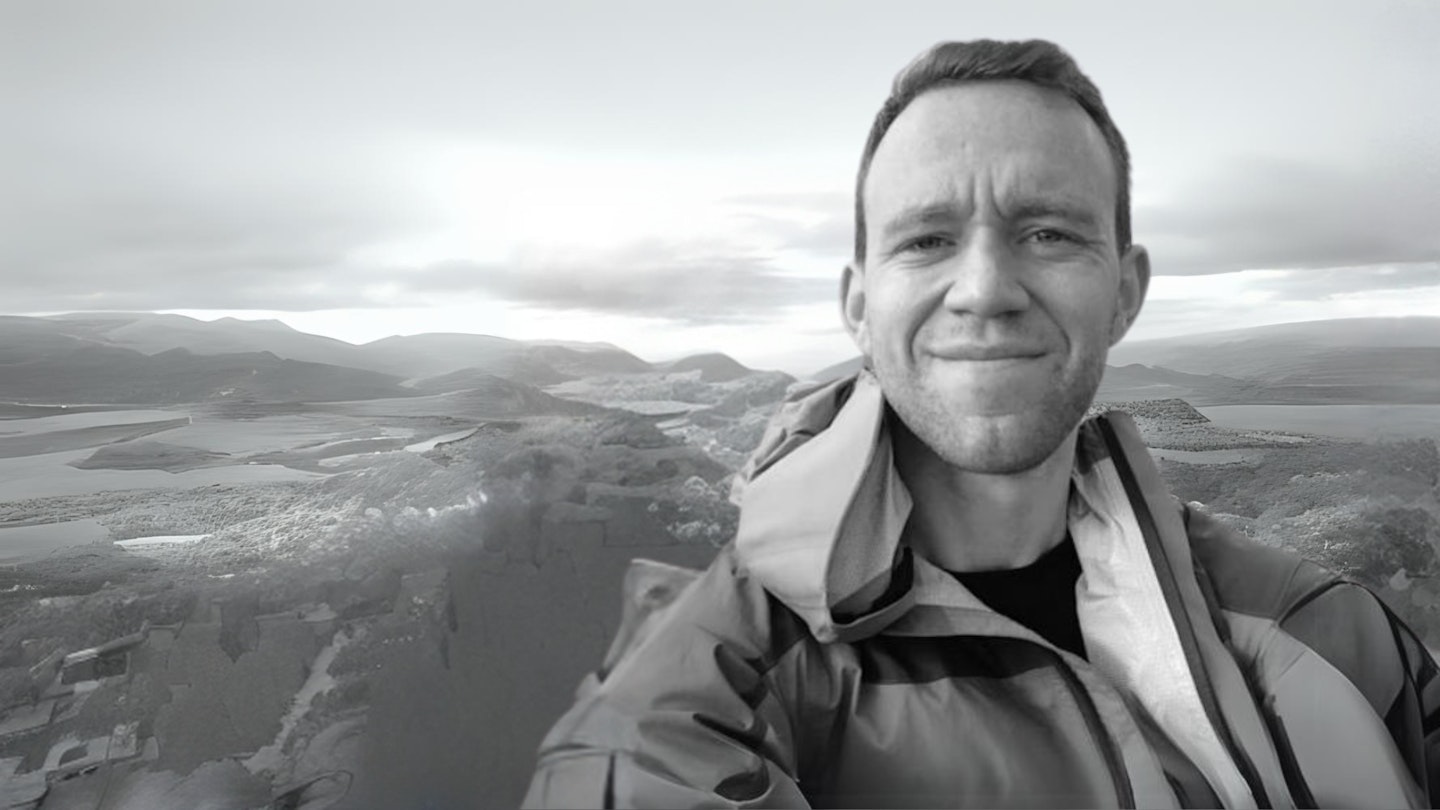
James Forrest is a prolific peak bagger and long-distance walker who’s one of the most high-profile outdoor writers in the UK.
He writes regular features and route guides for Trail and has been one of our main gear testers for the last few years.
James is based on the edge of the Lake District so when he isn’t off on his latest crazy adventure or challenge, he’s walking in his local fells.
He's perhaps best known for climbing every mountain in the UK and Ireland (all 1,001 of them!) in three years. He wrote about the English and Welsh part of that challenge in his book, Mountain Man.
James reviews every type of outdoor kit for Trail and is a real authority on everything you need for wild camping and packing light for a multi-day walk. You can follow his adventures on Instagram.


